

THIS WEEK
COMMENTARY
04 Opinion A call for state and local police to end use of force against peaceful protesters FOOD & DRINK
05 Reader Bites Pollo asado al carbón estilo Sinaloa at El Pollo Real
06 Investigation Feds used chemical agents dozens of times in Chicago
09 Make It Make Sense | Cardoza & Mulcahy Tenants of a South Shore apartment building raided by feds are unionizing, layoffs at SAIC, and more.
ARTS & CULTURE
10 Feature Jesse Malmed’s public curatorial project, Western Pole, celebrates ten wonderfully wacky years.
12 Book Review University of Chicago historian Michael Rossi’s latest book offers a cautionary tale on the perils of pseudoscience.
GIFT GUIDE
17 Our 2025 holiday picks Skip the seasonal shopping stress with curated local and small-batch gi ideas from Reader staff.
THEATER
22 Review | Reid Two current Shakespeare productions—The Taming of the Shrew at Court and Much Ado About Nothing at Chicago Shakespeare— provide contrasting lenses on gender politics.
24 Feature Casino (1995) belongs in the Chicago film canon.
26 Moviegoer Squeeks the means of projection
& NIGHTLIFE
28 Secret History of Chicago Music Bluesman Andrew Tibbs called out white bigotry in 1947.
30 City of Win Jasir Bailey transforms his Stockboy streetwear shop into a creative studio.
32 Shows of Note Previews of concerts including John Walt Day (with Saba and the rest of Pivot Gang), Silvana Estrada, and Julianna Riolino
35 Jobs





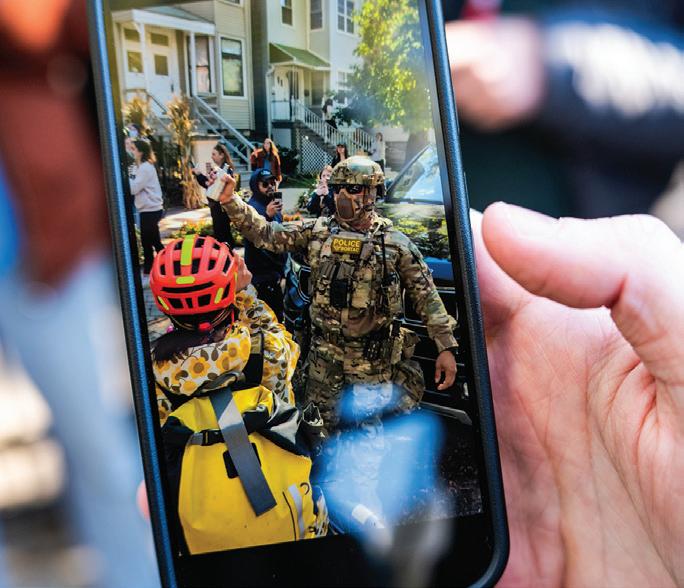

INTERIM PUBLISHER ROB CROCKER
CHIEF OF STAFF ELLEN KAULIG
ASSISTANT MANAGING EDITOR
SAVANNAH RAY HUGUELEY
PRODUCTION MANAGER AND STAFF
PHOTOGRAPHER KIRK WILLIAMSON
SENIOR GRAPHIC DESIGNER AMBER HUFF
GRAPHIC DESIGNER AND PHOTO RESEARCHER SHIRA FRIEDMAN-PARKS
THEATER AND DANCE EDITOR KERRY REID
MUSIC EDITOR PHILIP MONTORO
CULTURE EDITOR: FILM, MEDIA, FOOD AND DRINK TARYN MCFADDEN
CULTURE EDITOR: ART, ARCHITECTURE, BOOKS KERRY CARDOZA
NEWS EDITOR SHAWN MULCAHY
PROJECTS EDITOR JAMIE LUDWIG
DIGITAL EDITOR TYRA NICOLE TRICHE
SENIOR WRITERS LEOR GALIL, MIKE SULA
FEATURES WRITER KATIE PROUT
SOCIAL JUSTICE REPORTER DEVYN-MARSHALL BROWN (DMB)
STAFF WRITER MICCO CAPORALE
SOCIAL MEDIA ENGAGEMENT
ASSOCIATE CHARLI RENKEN
VICE PRESIDENT OF PEOPLE AND CULTURE ALIA GRAHAM
DEVELOPMENT MANAGER JOEY MANDEVILLE
DATA ASSOCIATE TATIANA PEREZ
MARKETING MANAGER MAJA STACHNIK
MARKETING ASSOCIATE MICHAEL THOMPSON
SALES REPRESENTATIVE WILL ROGERS
SALES REPRESENTATIVE KELLY BRAUN
SALES REPRESENTATIVE VANESSA FLEMING
ADVERTISING
ADS@CHICAGOREADER.COM, 312-392-2970
CREATE A CLASSIFIED AD LISTING AT CLASSIFIEDS.CHICAGOREADER.COM
DISTRIBUTION CONCERNS
DISTRIBUTIONISSUES@CHICAGOREADER.COM
READER INSTITUTE FOR COMMUNITY
JOURNALISM, INC.
CHAIRPERSON EILEEN RHODES
TREASURER TIMO MARTINEZ
SECRETARY TORRENCE GARDNER
DIRECTORS MONIQUE BRINKMAN-HILL, JULIETTE BUFORD, DANIEL DEVER, MATT DOUBLEDAY, JAKE MIKVA, ROBERT REITER, MARILYNN RUBIO, CHRISTINA CRAWFORD STEED
READER (ISSN 1096-6919) IS PUBLISHED WEEKLY BY THE READER INSTITUTE FOR COMMUNITY JOURNALISM 2930 S. MICHIGAN,




Have a strong opinion or perspective you’d like to share? We invite you to send ideas to letters@chicagoreader.com
Illinois shouldn’t become a stage for repression
State and local officials have condemned the use of excessive force on protesters by federal agents, but not by their own police.
By Yasemin Smallens
September 26, 5:30 AM: My goggles and respirator clinked together in the passenger seat as I drove to the Immigration and Customs Enforcement (ICE) Broadview detention facility. Since September 8, federal agents have arrested more than a thousand immigrants in the Chicago area; many have been taken to Broadview.
What I witnessed that morning—and what my colleagues and I later documented—was not crowd control. It was the deliberate use of excessive force against peaceful protesters, volunteer street medics, legal observers, and journalists. It was a show of power and intentional brutality.
As the sun rose, neighbors, faith leaders, and advocates gathered outside the fence surrounding the facility. They held flags, signs, and crosses, bound by a shared passion to speak out against ICE—the killing of Silverio Villegas-Gonzalez, the violent arrests across the Chicago area, and reports on the cruelty of detention conditions that echo those from other ICE facilities.
Before the clock struck 9, without warning and unprompted, federal agents fired pepperspray projectiles and tear gas canisters into the crowd. Raven Geary, an independent journalist with Unraveled, collapsed after an agent shot her in the face with a pepper ball. Agents shot Stuart Hall, a 66-year-old Army veteran, six times with pepper balls, though he wasn’t advancing toward the facility. He showed me his bruises, still red a week later.
As the gas thickened, my friend grabbed my shoulder and pulled me out. We stumbled past a journalist doubled over, cameras pressed to his chest, shouting that he couldn’t see. We poured water over our eyes, gasping.
On October 3, I returned to Broadview. This time local police and Illinois State Police joined federal agents in “crowd control.”
I watched federal, state, and local officers violently shove protesters, hitting some with clubs.
Violence by state police continued the following week. The National Lawyers Guild reported that state police clubbed multiple

legal observers over the October 10 weekend. Block Club Chicago also documented the state police’s increased presence and use of force; one demonstrator alleged state police dragged him into the street and attacked him.
In an October 20 filing opposing the Trump administration’s attempt to overturn a lower court’s decision blocking the deployment of National Guard troops in Illinois, Attorney General Kwame Raoul highlighted ICE’s praise of state law enforcement. He cited an email from Peter Sukmanowski, assistant director of ICE’s Chicago field office, in which Sukmanowski wrote that ICE was “grateful for the leadership” of the state police.
There is a very stark disconnect here:
Illinois bars state and local law enforcement from assisting civil immigration enforcement, yet local police have joined federal agents in attacking protesters.
Especially in Illinois, this touches a very raw nerve. Less than 60 years ago, officials at the local, state, and federal level worked together to repress Black political leaders. That collaboration culminated in the shocking police killing of 21-year-old activist Fred Hampton in his bed. His name echoes through Chicago’s streets today, a symbol of how quickly “public order” can become the pretext for violence against those who speak out.
Operation Midway Blitz, and the response by federal agents and state and local police to
those reacting to it, risks normalizing a level of state violence that should be unthinkable: unprovoked attacks on people expressing dissent, chemical irritants and projectile rounds aimed at journalists, legal observers beaten in the act of documentation, medics targeted while treating the injured.
The call for federal agents to halt the excessive use of force against protesters in Illinois is necessary, urgent, and growing. Governor J.B. Pritzker has publicly condemned the actions by federal agents at Broadview and established the Illinois Accountability Commission to document complaints against federal agents and recommend reforms. Still, ensuring accountability requires more: state and local officials need to take active steps to ensure that their own forces are working to safeguard, not stymie, the rights to free expression and peaceful assembly.
Governor Pritzker, Attorney General Raoul, and the Illinois State Police should reaffirm— publicly and in practice—that state and local police protect the rights of protesters and stop responding to dissent with violence. The state government should take concrete steps to ensure the police do not deploy excessive use of force against protesters at Broadview; that they provide protesters with ample time, warning, and instructions when issuing dispersal orders; and that they refrain from arresting anyone simply for lawfully exercising their right to protest. The state should also conduct an independent investigation into the use of force by state and local law enforcement.
My phone continues to buzz with photos of protesters, of bruises, beatings, arrests, of violence incurred at the cost of speaking out. The brutality has revealed Illinoisans’ enduring courage and compassion. The question is whether local and state officials will show theirs. v
Yasemin Smallens is a researcher at Human Rights Watch.
m letters@chicagoreader.com
Illinois State Police at an October 11, 2025, anti-ICE protest in Broadview

Southeast Spotlight: A Southeast Chicago Chamber Special


Shining a light on local businesses to support this holiday season
The season of giving and gratitude is here. To acknowledge and honor another busy year, the Southeast Chicago Chamber of Commerce is excited to bring some businesses back into the spotlight, share some upcoming initiatives, and spread love by supporting local.
Forget Black Friday, it’s all about Shop Small Saturday. Whether you need gi s for others, some food to feed the family, or are looking to get a head start on your New Year’s goals, the southeast side is serving up everything you need this holiday season.
• Looking to send some gi s to long-distance loved ones? Head over to UNIVERSAL CONCEPTS OFFICE CENTER to take care of all your shipping needs.
• In need of a wardrobe refresh? Shopping at ESSENTIAL ELEMENTS—which has been keeping the south side stylish since 1987— will solve all your problems!
• Too tired to make a multicourse meal? Make your family and friends smile when you cater your holiday dinner (or maybe just the main dishes) from MEDLEY GRILL & BBQ
• Remember to care for yourself just as much as you care for others. Visit RAZE UP BARBER SPA and TRANQUIL AESTHETICS BEAUTY SUITES for your hair and beauty upkeep.



• Looking to move your body more? CHICAGO BODY SHOP tailors workouts specifically for your fitness needs, while THE RINK taps into old school roots to get you grooving and going. If moving to the beat is more your speed, the MAYFAIR ART CENTER has classes for you!
• Insurance matters can be quite the headache, but the folks of Charles Cathey State Farm and 200 PHARMACY & HOME MEDICAL SUPPLIES are here to navigate and advocate for you, ensuring you feel confident and cared for.
• Hoping to showcase some handcra ed signage, made right here in Chicago? W.G.N. FLAG & DECORATING CO. for beautiful banners and the fabulous four-star flag.
• Make sure Santa doesn’t need to check twice for your kid’s name on the nice list; send them to Kreating Young Minds Academy for holistic, creative, early childhood education.
For details on each business, be sure to visit the Southeast Spotlights homepage and follow the Southeast Chicago Chamber of Commerce on Instagram. Thank you for reading Southeast Spotlights and supporting local!
Find more one-of-a-kind Chicago food and drink content at chicagoreader.com/food


FOOD & DRINK

It rises from the smoke like a phoenix, flaming red, stippled with char, and spatchcocked as if in flight. Except this bird never takes off. Instead, it’s hacked into pieces and boxed with grilled jalapenos and cebollitas, pickled red onions, frijoles, warm tortillas, and two salsas. This Little Village spot has been charcoalgrilling adobo-infused chicken—“100% estilo Sinaloa”—for more than a decade. (There’s another location in West Lawn.) In the northwestern Mexican state from where it comes, pollo asado al carbón is served from roadside stands, typically marinated with ancho, oregano, vinegar,

citrus juice, and warm spices like cinnamon and clove, before it’s split open and flattened over the fire. They do that here too, and though it’s been delivery- and pickup-only since COVID, you can still nose the alluring bouquet of smoke, spice, and flamelicked fowl in the empty dining room. And when you order, you can still peer into the kitchen window through billows of smoke at the flock of hissing birds neatly mustered on the parilla. Everyone knows that the skin is the tastiest part of the chicken, but when it seals the juicy flesh within, suffused with gentle heat and adobo tang, all that’s left is to arrange it al trunko, grab a tortilla in your paw, and tear it up.
—MIKE SULA EL POLLO REAL 3835 W. 31st, 773-847; 6330 S. Pulaski, 773-776-4336 v
Reader Bites celebrates dishes, drinks, and atmospheres from the Chicagoland food scene. Have you had a recent food or drink experience that you can’t stop thinking about? Share it with us at fooddrink@ chicagoreader.com.

FOOD & DRINK Newsletter
SOUTHEAST CHICAGO CHAMBER OF COMMERCE @southeast_chamber


Sign up today! The latest reviews, food pop-ups, and more from our critic Mike Sula Every Friday









Pollo asado al carbón estilo Sinaloa at El Pollo Real
This content is sponsored by the Southeast Chicago Chamber of Commerce
MAX SANSING
NEWS & POLITICS
INVESTIGATION
Feds used chemical agents dozens of times in Chicago
An investigation by reporters from six newsrooms found that agents used chemical irritants nearly 50 times during Operation Midway Blitz.
By JOSE ABONCE, ALMA CAMPOS, JIM DALEY, ANDREW FAN, FRANCIA GARCÍA HERNÁNDEZ, SEBASTÍAN HIDALGO, MAHEEN KHAN, MAIRA
EFRAÍN SORIANO, JONATHAN TORRES, AND WENDY WEI
This investigation was coproduced by Block Club Chicago, Cicero Independiente, the Investigative Project on Race and Equity, Invisible Institute, South Side Weekly, and the TRiiBE.
José* was inside his Brighton Park home with his wife María* and their pets on October 4 when the smell of tear gas overwhelmed him.
“The gas seeped in and we started choking, so I said, ‘[Get] the bird and the cat,’” María said in Spanish. (José and María are pseudonyms we are using due to concerns about retribution.)
Tear gas, thrown in the middle of a residential block by federal agents, seeped into their home through the air-conditioning vents and the old, unsealed windows. It quickly spread throughout the first floor, filling the living room, dining room and kitchen with toxic fumes.
“We couldn’t open the windows because the gas would get inside. We couldn’t go to the backyard. So, we hid in the back room,” María said.
Their house was among several in Brighton Park that were engulfed in tear gas after federal agents threw canisters during an hours-long stando with Chicagoans.
Despite the lingering smell of tear gas, the family didn’t leave the house for two days. When they did, they found a tear gas canister on the front porch of their home.
“I had never felt such fear,” José said. “I’ve lived in Chicago for 40 years, and it’s the first time I’ve seen anything like this. To live it firsthand, it feels awful.”
The tear gas that blanketed the block was part of an unprecedented wave of chemical weapons deployed on Chicago’s streets during Operation Midway Blitz. An investigation by a group of Chicago-area newsrooms and independent journalists found that federal agents used tear gas and pepper spray at least 15 times in Brighton Park on October 4—more than the Chicago Police Department (CPD) has used all year.

None of the CPD’s uses involved protesters. The department says its o cers haven’t used chemical weapons on demonstrators since 2021.
A close review of the October 4 protests shows federal agents repeatedly using tear gas and pepper spray, often appearing to escalate encounters with nonviolent protesters. Videos and photos show agents tossing tear gas from moving vehicles and deploying gas and pepper balls with little or no warning, even when protesters and bystanders posed no visible physical threat. Tear gas has been linked to long-term health problems. Experts also warn that the aggressive tactics by federal agents can create dangerous confrontations and threaten the free speech of Chicagoans.
A Department of Homeland Security (DHS) spokesperson later blamed the incident on demonstrators. DHS did not respond to a request for comment for this story.
The events of October 4 also helped establish a pattern of force by federal agents. Our investigation found that federal agents used chemical weapons on protesters at least 49 times across 18 incidents across Chicago and the suburbs since October 1. Federal agents have used chemical irritants at least 30 times since a judge placed restrictions on their use of tear gas and pepper spray. Contrary to federal claims about attacks on agents, most of these incidents appear to involve nonviolent protesters or bystanders.
The findings are based on videos and photos
posted online or sent to a tip line organized by a group of nine local newsrooms and independent journalists. The review does not include chemical weapon uses from outside the federal ICE facility in Broadview, a western suburb, where agents have also repeatedly deployed tear gas and pepper balls.
On November 6, U.S. District Court Judge Sara L. Ellis issued an order forbidding federal agents from using riot control weapons, including tear gas, unless it’s necessary to stop someone from physically harming another person. The order is part of a lawsuit filed on behalf of Block Club Chicago and other media organizations, seeking to protect the First Amendment rights of journalists and peaceful protesters.
Federal agents use nonlethal weapons including tear gas against protesters in Brighton Park Saturday, October 4, 2025. DANIEL DELGADO
KHWAJA,
Since then, federal agents have used chemical weapons at least four times, including two cases where agents appeared to fire pepper spray out of a moving vehicle directly into another moving car, possibly violating both the injunction and Border Patrol rules restricting chemical weapon uses on motorists.
The protests that ended with tear gas wafting over houses in Brighton Park began that morning, when Border Patrol agent Charles Exum shot Marimar Martinez, a 30-year-old Chicago resident and U.S. citizen, multiple times. Federal o cials claimed that Martinez tried to ram agents with her car. Martinez’s attorney said during a court hearing that federal agents’ bodycam footage shows an agent turning their vehicle into Martinez’s before Exum exited his vehicle and shot her. As federal agents surrounded the scene of the shooting, a few dozen protesters faced o with a handful of federal agents in tactical gear at the intersection of 39th Place and Kedzie Avenue.
As the man backpedaled away, an agent placed his pepper-ball launcher in the middle of the street, about a dozen feet from several onlookers. He then strode toward the protester.
Another agent ran forward and pulled the first agent back, then shot pepper balls at the feet of nearby protesters. Moments later, an agent fired projectiles toward the crowd as it retreated up the block.
The encounter, including the sudden deployment of chemical weapons on protesters, left people coughing, and infuriated.
“Don’t f—ing touch people. Nobody touched you,” a woman yelled. “All that aggression for what?”
U.S. Department of Homeland Security
Assistant Secretary Tricia McLaughlin told a Fox News host that the agents in Brighton Park were “surrounded by a violent crowd who began to throw bottles and rocks at our agents.”
Videos of the Brighton Park protests paint
After a few minutes, a line of agents ordered protesters away from the scene of the shooting. Most began to move, but a lone protester stood his ground in the street. One agent shoved him and others reached for him as he struggled to escape, his shirt flying into the air during the scu e.
a di erent picture: They show federal agents initiating a confrontation with a vocal but nonviolent crowd. The confrontation at 39th Place and Kedzie Avenue appears to be the first time they used chemical weapons in Brighton Park.
All told, videos and photos from the Brighton Park protest show agents deploying tear gas and pepper balls at least 15 times. Ten of the Brighton Park chemical weapon deployments appeared to target nonviolent protesters. Only three deployments occurred after objects were thrown toward agents. All three appeared to happen after agents had previously used chemical weapons against protesters.
Videos from the corner of Pershing Road and Kedzie Avenue show federal agents rolling tear gas grenades toward small groups of nonviolent protesters at close range, including an agent who tosses tear gas at a man raising his hands in an apparent attempt at de-escalation.
At 39th Place and Kedzie Avenue, at least three federal agents threw canisters at protesters, engulfing part of a residential block in tear gas. Photojournalist Daniel Delgado said only about two dozen peaceful demonstrators were at the intersection, and agents gave
no warning before throwing the canisters. Delgado’s photos show Chicago police officers standing alongside federal agents as the agents used tear gas against protesters. At least three incidents appear to involve agents tossing tear gas canisters from vehicles as they drove away. A video posted by journalist Dave Byrnes shows a canister igniting at the feet of a surprised onlooker, who screams and runs away.
César Cuauhtémoc García Hernández, an Ohio State University law professor who focuses on immigration law and police practices, said tossing canisters from moving cars poses real risks since “the person throwing the tear gas has very little ability to control where it’s going.” He added that the approach “is very indiscriminate. It’s going to affect whoever happens to be around, whether those are people who are protesting or not.”
Chet Epperson, a 33-year police veteran and former Rockford police chief who now serves as a federal consent-decree monitor for New Orleans, said that each deployment of force should be investigated.


NEWS & POLITICS
continued from p. 7
“Management of law enforcement needs to look at every one of these deployments and ask itself: Was it necessary? Was it proportional? Was it under the Constitution? Was it by department policy? And are there alternative methods we could have deployed?” he said.
It’s unclear whether the tear gas deployments triggered any such review. Agents have operated under a temporary restraining order limiting their use of riot control weapons since October 9, but lawyers for the plainti s in the lawsuit claim that federal agents have repeatedly violated the order.
The majority of the chemical weapon deployments reviewed by reporters occurred after the restraining order went into effect. Most appeared to target nonviolent protesters, including tear gas deployments in Lakeview, Avondale, and Albany Park.
Altogether, reporters gathered and reviewed 49 uses of tear gas and other chemical weapons since the start of October. Of these, two-thirds appear to have targeted peaceful demonstrators or bystanders. Eight clearly show objects being thrown toward federal agents immediately before they respond with tear gas; the remaining cases are inconclusive.
In an interview with CBS, Border Patrol Chief Greg Bovino has called his agents’ use of force “exemplary” and declared, “If someone strays into a pepper ball, then that’s on them. Don’t protest and don’t trespass.”
Judge Ellis found that Bovino lied about his use of tear gas, saying that he had “admitted that he lied about whether a rock hit him before he deployed tear gas in Little Village.”
Federal agents’ use of chemical irritants stands in stark contrast to the Chicago Police Department, which regularly handles protests and crowds without resorting to similar tactics.
One major di erence is that the CPD policy sharply limits the use of tear gas and pepper spray on people who are protesting, typically requiring both the threat of violence and the approval of the superintendent. University of Chicago law professor Craig Futterman, who helped negotiate the current policy after CPD faced criticism for their use of pepper spray on protesters in 2020, said the limits are in place “to protect the First Amendment rights of people to protest, to voice dissent, to report, [and] to assemble.”
Even the threat of violence from a member of the crowd does not automatically mean senior o cials will authorize chemical weapons,
said Futterman, who points to the risk of hurting “people who have done nothing wrong, who pose no threat to anyone” and concerns that indiscriminate chemical weapon deployments can escalate confrontations, driving people to fight back.
“Throughout the past few years, CPD has successfully secured numerous large-scale demonstrations, including those related to the war in Gaza and the 2024 Democratic National Convention,” a Chicago police spokesperson said in an email. “Our responses to First Amendment assemblies are guided by our First Amendment Rights policy, which is rooted in fair, impartial and constitutional policing.”
“The main thing with tear gas is that it’s a pretty indiscriminate weapon,” said Rohini Haar, an emergency physician and medical adviser for Physicians for Human Rights, which studies the health impacts of crowd-control weapons such as tear gas. “You can’t say, ‘Oh, I’m only trying to hit this one individual.’ Everybody disperses.” Once deployed, “it aerosolizes, it goes into the air, and then it kind of targets everybody in that space.”
The effects can be immediate and severe: burning eyes and skin, coughing and su ocation.
“It hurts a lot more than you think it does,” Haar said. “Especially when you’re exposed to too much or you’re not able to get out because

Many federal agents operate under less restrictive rules. Border Patrol force guidelines released as part of ongoing litigation against the Department of Homeland security show that agents are allowed to use tear gas and pepper spray against people actively resisting them.
The use of chemical weapons in Brighton Park left a mark on participants and neighbors alike. For a few days, José and María had skin rashes and discomfort, which they believe was an e ect of their exposure to the chemical agent. Meanwhile, Delgado, the photographer, said his throat felt scratchy for several days after he was a ected by tear gas.
Residents across the Chicago area are now confronting the e ects of chemical weapons. After federal agents used tear gas in Logan Square, Julia Cary went to help people hit by the cloud of gas. She said two of the hardest-hit victims were a couple who were driving nearby when their car was engulfed by the cloud of gas. Cary said the pair struggled to open their eyes, and she needed to peel back their eyelids to flush their eyes with liquid. The same deployment also caught a couple walking home from school with their two-year-old.
Federal agents have been operating under a temporary injunction that limits their ability to use chemical weapons on protesters and journalists since November 6. Reporters reviewed four instances of agents using pepper spray or tear gas since the injunction was issued.
Two videos from November 8 show agents using chemical weapons in ways that appear to violate both the injunction, which only allows agents to use pepper spray if there is an “immediate threat of physical harm,” and current Border Patrol rules, which restrict their use against children, older people, and people driving cars.
One video shows federal agents deploying pepper spray into a family’s car in Cicero, hitting a man with asthma and his one-year-old daughter. Another clip provided to reporters shows agents pulling alongside a moving vehicle on Roosevelt Avenue and apparently firing pepper spray at the occupants before speeding o . Neither video shows any visible threat to agents before their use of pepper spray.
Uses of force that appear to violate both agency rules and judicial orders could create a dangerous situation, one expert warned.
you’re in an enclosed space.”
For children and pregnant people, the risks are higher. “Children have more fragile skin,” she said. “They also have more skin per body weight, so they just have more spaces to get exposed.” There have been “case reports of miscarriage and complications, especially with overuse of tear gas.”
Although international standards such as the U.N. Basic Principles on the Use of Force outline the need for necessity, proportionality, and precaution, they are rarely enforced.
“By and large, these weapons are highly unregulated,” Haar said. “No one’s regulating the manufacturer, how they’re made, what the concentration of it is in there.”
“What they’re doing is creating a whole lot of ill will with local communities,” said García Hernández, noting that Department of Homeland Security agents appear intent on using tactics that escalate confrontations. “And right now that is mostly manifesting as an organized, peaceful resistance. I hope it remains that way.” v
You can help us report on the use of force by federal agents. Submit tips at tinyurl.com/ chicagojournalists. The tip form is monitored by journalists from Block Club Chicago, Borderless, the Chicago Reader, Cicero Independiente, Invisible Institute, the Investigative Project on Race and Equity, Lumpen Radio, South Side Weekly, and The TRiiBE.
m letters@chicagoreader.com
Agents deploy smoke bombs at 105th and Avenue N in Chicago’s East Side during a tense standoff with residents. MATTHEW KAPLAN FOR BLOCK CLUB CHICAGO
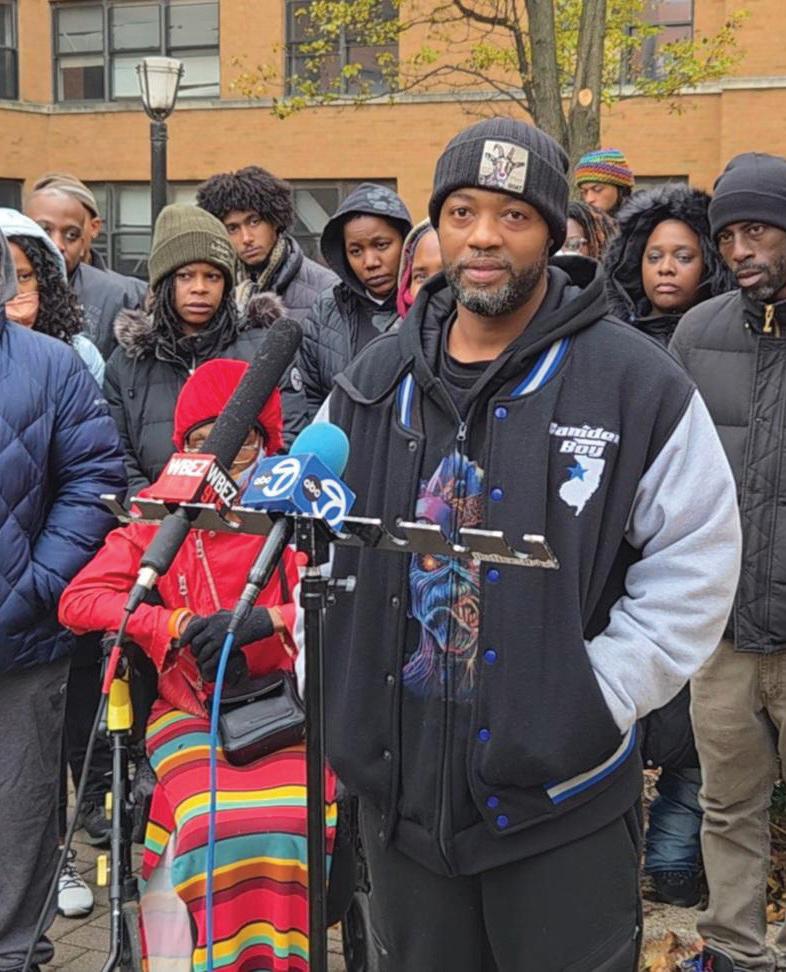
Union strong
Tenants of the 7500 S. South Shore apartment building, raided by federal immigration agents at the end of September, held a press conference Monday to announce the formation of their new tenants’ union.
Residents are seeking restoration of heat, electricity, and elevator service in the building, among other demands. “This has nothing to do with the ICE situation,” Darren Hightower, a two-year resident of the building, said at the press conference. “This building has been deteriorating for over the past year.”
Problems at the building predate the damage federal immigration agents caused during their violent raid nearly two months ago. Conditions inside are so bad that earlier this month, Cook County judge Debra Seaton appointed a company owned by Jared Friedman , co-CEO of Friedman Real Estate , as receiver for the building. The court ordered Friedman to “immediately” seek relocation for the current tenants and to begin repairs on the building in the meantime.
Despite the judge’s orders, Hightower and fellow resident Mashawnda Price said the roughly three dozen tenants who remain still deal with mold, poor lighting, cold, and pests.
Infiniti Gant , an organizer with community group Southside Together , said that as the remaining tenants prepare to move out, they are demanding Mayor Brandon Johnson work with Friedman to ensure they can remain in the South Shore neighborhood. Gant said they are also each seeking $7,500 in


relocation assistance.
A neighbor who attended the press conference voiced concern that similar immigration raids would be used to remove low-income people of color from attractive real estate.
“I feel like what people are not mentioning in this story is that this building is one block away from the beach,” said the neighbor, who asked not to be named. “This is an attempt at gentrification. Point-blank, period.” —Dave Byrnes
Sacked by SAIC
The School of the Art Institute of Chicago (SAIC) laid off 20 employees earlier this month, including three of the five employees of the highly regarded media art collection Video Data Bank . In a series of public announcements to staff over the past four months, the school has cited significant financial losses this fiscal year due in part to a decline in enrollment and an increase in costs. In addition to cutting positions, the school has suspended overnight building access, frozen or reduced nonessential expenses, such as employee travel, and reduced capital expenditures.
The gutting of Video Data Bank is just the latest cost-cutting move by the school to be met with public outcry. Last December, the school announced it was selling the art and archives from the Roger Brown Study Collection to the John Michael Kohler Arts Center Art Preserve. Brown, a Chicago Imagist and one of the school’s best-known alums, left SAIC his
ment from AFSCME, one-third of bargaining unit members are paid at the city’s minimum wage—just $16.60 an hour; almost all members make less than $20 an hour. MSIWU—which represents more than 120 workers—cited pay equity, better workplace health and safety protocols, and more opportunities for professional development as their initial reasons for organizing.
Lincoln Park home and its eclectic collection of art and ephemera shortly before his death in 1997. In September, the school put the house itself up for sale, for $1.175 million—sparking another round of protest and resulting in the Commission on Chicago Landmarks granting the home preliminary landmark status.
Former Video Data Bank director Tom Colley, who had been with the school for 27 years, was among the impacted employees. On Instagram, he put a call out to artists whose work is included in the collection to discuss how to preserve or reconstitute the bank’s “core values and functions.” In a statement, an SAIC spokesperson wrote, “SAIC remains committed to the Video Data Bank and the value it provides to artists, other colleges and researchers, and the field. The Video Data Bank is not going away; however, in order to maintain and distribute its collection, we needed to adjust staffing levels.” —Kerry Cardoza
Let’s make a deal
In April 2023, workers at the Griffin Museum of Science and Industry announced their intention to form a union with the American Federation of State, County, and Municipal Employees (AFSCME) Council 31. Museum of Science & Industry Workers United (MSIWU) won their union election just six weeks later, then spent the next two-plus years trying to settle on a first contract with management.
Museum management has not given workers a raise since 2022. According to a state -
On November 14, MSIWU announced that if a contract wasn’t settled at their next session, they would strike on November 29. The threat seemed to do the trick: At their November 17 negotiating session, the union came to a tentative agreement with management. According to a statement from AFSCME, union members will meet “to review terms of the tentative agreement and vote on its ratification” in the coming days. As Zach Kelchen , a guest engagement representative at MSI and a member of the union bargaining committee, put it: “It’s way past time for management to do what’s right.” —Kerry Cardoza
Demolition demands
The Pilsen Environmental Rights and Reform Organization (PERRO) is calling on the city to halt the planned demolition of the Fisk Generating Station until it releases a comprehensive plan that includes testing for and remediation of toxic chemicals.
In September, the City of Chicago issued a demolition notice for the defunct power plant at 1111 W. Cermak. PERRO and 25th Ward alder Byron Sigcho-Lopez have repeatedly called on the city’s buildings and public health departments—most recently on Friday outside the Chicago Department of Public Health—to pause the demolition until officials are sure it will not blanket the surrounding community in dangerous contaminants.
In a press release, PERRO says the current demolition plan doesn’t include testing or remediation for contaminants other than lead or asbestos. “The Pilsen community demands through testing and reporting of coal combustion residual chemicals before the demolition starts,” the release states. PERRO is also calling on the plant’s owner, Midwest Generation , to negotiate a community benefits agreement governing the redevelopment of the site. —Shawn Mulcahy v
Make It Make Sense is a weekly column about what’s happening and why it matters.
m smulcahy@chicagoreader.com
From L: Darren Hightower, resident of 7500 S. South Shore; Fisk Generating Station; MSI workers DAVE BYRNES, WARREN LEMAY/FLICKR VIA CC-BY-4.0, AFSCME COUNCIL 31
ARTS & CULTURE
RETROSPECTIVE
Post yes bills
Celebrating a decade of Western Pole at Patient Info
R“POST POST POST: 10 YEARS OF THE WESTERN POLE” Through 12/ 13 : Sat 11 AM– 3 PM, Patient Info, 902 N. Western, patientinfo.club

IBy ERIN TOALE
t really doesn’t get more Chicago than Western Pole. The project is public but unsanctioned, open-source but curated, and turns a ubiquitous utilitarian object—a telephone pole—into a space of joy, experimentation, and play. Western Pole is barely quantifiable (instigator Jesse Malmed estimates the total number of participants to be around three hundred), but a tangible 34 artists each offer a slice of Chicago (or adjacent) history in this exhibition. In “Post Post Post,” Malmed’s punk ethos informs aesthetics like xeroxed zines and collages on letter-sized printer paper, which coexist alongside capital “A” Art Objects and time-based works. Participating artist Lia Kohl tells me in an interview: “I think one of the fun things about Western Pole is that it’s not really conducive to any media—it’s a pole!” Her project, three minutes at five fifteen (Lia Kohl for Dial-A-Pole), can be accessed from anywhere in the world by dialing 215-914-5652. Western Pole is—in short— an art gallery on an itinerant telephone pole. The two primary poles were chosen based on proximity to where Malmed resides: Western and Iowa (2015-2019) and Western and Cermak (2019-present). More of a philosophy than a physical space, other iterations/venues have included Rainbo Club (Rainbole), OxBow School of Art (Ox-Pole), and in Santa Fe (Southwestern Pole). Works have provoked unexpected public engagements of every nature, such as in the case of Jessica Campbell’s 2020 text-based inlaid carpet sampler which read “FREE.” To her “enormous delight,” it was immediately taken by a zealous neighbor. She writes in our






















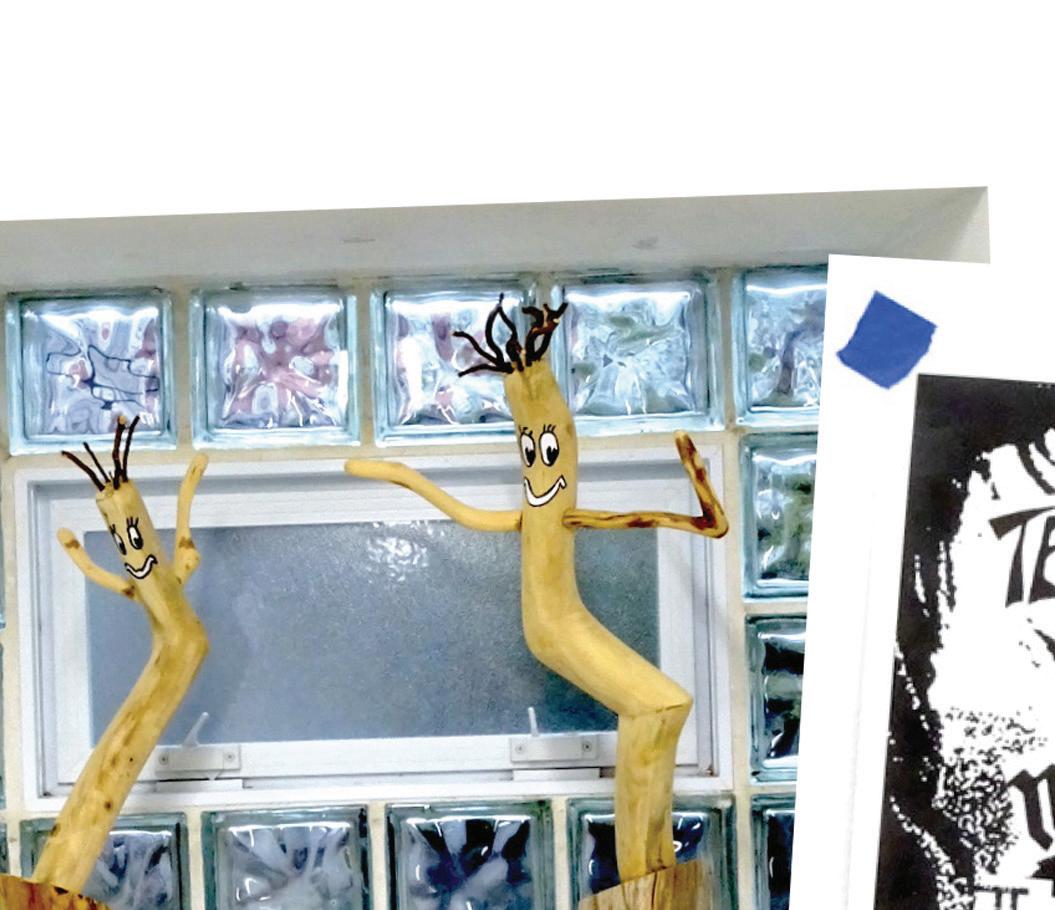








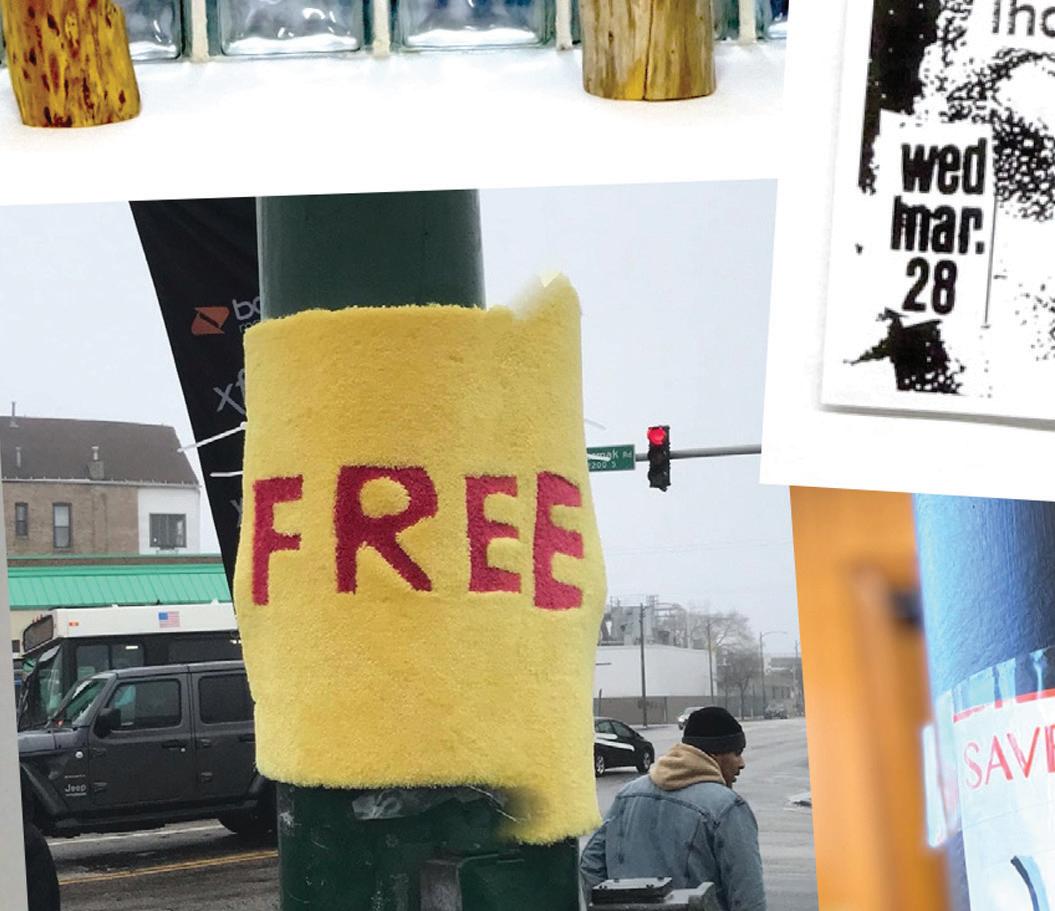
















on view include re-creations



a milestone seldom seen of operation got a birth chart reading by for











chart became a work of art a Malmed






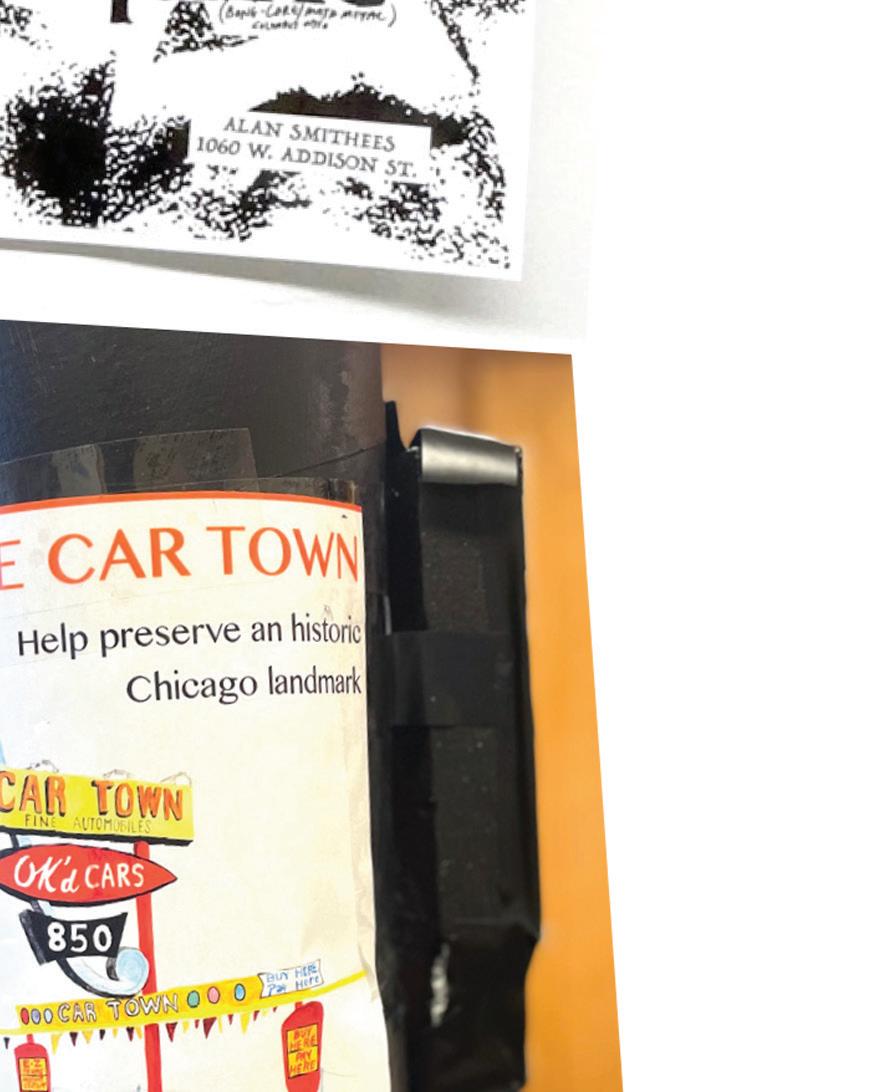
extrospective, and/or intraspecentendres language





page heralds a “pillar of the . exhibitions of 8.5x11 [inch] scrappiness and furnished






underpinning conceptual

ing exhibition space, a former dermatology
correspondence: “The people who took it left this really sweet note that mentioned they’d been watching the pole for months and finally felt comfortable taking a piece from it, as they had been, in some ways, invited to. I really loved that the piece got stolen (they also left a drawing of the work on their note, which I love as well).” Since many of the originals no longer exist or are lost to time/weather, works on view include re-creations or different projects from previous participants. Malmed’s projects famously avoid classification and defy commodification. At Patient Info, this brilliant, transient, and quixotic curatorial inquiry celebrates a milestone seldom seen by similar DIY enterprises: ten years of operation as of October 13 (3:30 PM CDT). The pole itself (a Libra, based on the initial exhibition) got a birth chart reading by astrologer Blair Bogin for the occasion. Naturally, the natal chart became a work of art itself and is displayed on a sunbleached bulletin board. When I inquired if he considers this a retrospective, Malmed (always the word player) responded that it’s more of an “introspective, extrospective, and/or intraspective.” Double entendres abound in language around the initiative—the website’s “about” page heralds a “pillar of the con/temporary art community in Chicago and beyond . . . [consisting of] mostly weekly exhibitions of 8.5x11 [inch] works.” Western Pole is a project about possibilities—an undertaking that celebrates abundance sustained by scrappiness and furnished with found, raw, and unpolished urban remains. The underpinning conceptual constants are Malmed’s curiosity and commitment to the bit. This celebratory sensory smorgasbord permeates Patient Info’s already stimulating exhibition space, a former dermatology practice-turned-gallery founded by Brian Jucas in 2019. His father, a Lithuanian im-
Installation images, “Post Post Post;” center image Jessica Campbell for Western Pole
things about Western Pole is
migrant, bought the building in 1988, and it served as his home and medical practice until his retirement. Far from a white cube, this is a venue where preservation is valued, says Jucas, who loves the building’s “old and funky” character. “It’s not stuffy or pretentious. It might be musty and a bit creepy or cozy depending on your position on wood paneling [author’s note: strongly positive].” Jucas, who is also a painter and has a day job in IT at the Art Institute, says he prefers organizing shows with other artists versus curators, because, “It’s nice to speak the same language and feel like we are on the same playing field.” Jucas describes Malmed as an “ideal collaborator,” noting that his demeanor informs the democratic and accessible nature of Western Pole.
Visiting the show feels achingly nostalgic. The specter of Car Town—the former used-car dealership that sat on the southwest corner of the OG Western Pole intersection—looms large. (The dealership was demolished in 2020 to accommodate a soulless condo building.)
Stella J. Brown’s 2016 tribute to the iconic retro 50s signage greets visitors upon enter-
ing; this obsession with vintage advertising (formally and conceptually) permeates the exhibition alongside Malmed’s bullish interest in the printed word. There is a call-and-response nature to the works, and a swirling discourse between them.
The exhibition feels like a deconstructed book, perhaps a yearbook (of a scene, not a school) or self-published periodical. It features former fixtures who have departed Chicago (including Campbell and Jen de los Reyes) as well as those who have become ancestors, like Thad Kellstadt and Thomas Kong. From the late artist and activist Kellstadt, we have an absurdist advertisement for nothing and everything. It’s a fake flyer for a nonexistent show at an imaginary venue (Alan Smithee—referencing a pseudonym auteurs use when they have disowned a project). The (made-up) band names all together read: “Teen Angst Gave Me Nothing More Than Heartache And Prozac.” It could be a bill for a show at neighboring Empty Bottle, whose recognizable advertisements also line the Western Avenue cultural corridor. It wouldn’t be a Malmed production without
layers of idiosyncratic self-reference. The pole often features works hanging on top of each other, and this overlapping stratification informs Malmed’s curatorial hand. He joked, “Everything is a trick,” which isn’t to say the show or works therein are malicious, but everything may (or may not be) as it seems. Inside the gallery, “fake” poles were erected—works of art themselves made by Jucas. Referencing Tadao Ando’s massive columns at the Art Institute of Chicago, Ando’s Dermatology 1-6 are made of quickcrete, paint (an exact match to the municipal black and green used by the city), and toy bolts. One such pillar contains a blink-and-you’ll-miss-it backlit 35 mm slide from the collector of an unknown birder by de los Reyes. This is another layered “trick”; inversion upon inversion where the art is in the pole (not on it), and the birds are both outside (the gallery) and inside (the pole). There is something so intimate and delightful about this juxtaposition, which invites the viewer to cozy up and squint at what’s inside.
In the courtyard, a pile of poles forms a bench (Camille Casemier’s a place to talk ) for sitting, smoking (ashtray inclusive), and

ARTS & CULTURE
taking in an activation of Madeleine Aguilar’s cymbal pendulum, a “pole” made of cymbals suspended on a rope. Max Guy’s laminated leaf silhouettes are tucked into corners both inside and out; when you depart, they rustle down Western, camouflaged by and in chorus with the crunchy seasonal organic layer underfoot. Trust is an invaluable currency in 2025. To run a project like Western Pole for ten years is an unbelievable feat, one that could only be attained by someone universally regarded not just for his pleasant demeanor, but for an approach that combines “humor and levity with equal parts rigor and professionalism,” as de los Reyes put it. Kohl echoes: “Jesse is one of my favorite artists to be around, because I get the sense that for him, everything is art. . . . Everything is interesting and worth paying attention to artistically. It’s a very contagious energy.” Too often nowadays, the concept of “community” is invoked as shorthand for: “What can you do for me?” With Western Pole, Malmed asks instead: “What can we do for each other?” v m
Organized by the Frist Art Museum, Nashville, Tennessee, where it premiered earlier this year, and curated by Mark Scala, Chief Curator, Frist Art Museum.
ARTS & CULTURE
BOOKS
RCAPTURING KAHANAMOKU by Michael Rossi HarperOne, hardcover, 352 pp., $26 50,
harpercollins.com
The dark history of eugenics
Historian Michael Rossi’s latest book draws eerie parallels with today’s social and political discourse.
By EMILY MCCLANATHAN
The Man in the High Castle , Amazon’s original series based on the 1962 novel by Philip K. Dick, imagines an alternate history in which the Allied forces lose World War II and the United States is annexed by Nazi Germany and Japan. In one subplot, a teenager named Thomas, the son of a high-ranking American o cer in the Third Reich’s military, receives a devastating diagnosis that deems him physically unfit for the regime’s strict eugenic codes. Based on this work of speculative fiction, it would be easy to assume that eugenics originated in Nazi Germany, but in reality, the U.S. had become a leader of this international movement by the mid-1930s.
University of Chicago historian Michael Rossi explores this dark chapter of American history in Capturing Kahanamoku: How a Surfing Legend and a Scientific Obsession Redefined Race and Culture. A specialist in the history of science and medicine, Rossi defines eugenics as “the science of selectively breeding human beings—ideally through choice; if need be, through force.” Twentieth-century eugenicists obsessively reduced individuals to statistics, measuring physical features with calipers, administering culturally biased intelligence tests, examining human remains, and taking photographs and plaster casts of live models.
RBOOK TALK WITH AUTHOR Wed 12/3, 4 PM, Seminary Co-op Bookstores, 5751 S. Woodlawn, RSVP at semcoop.com/event/michael-rossi-capturing-kahanamoku, free
In contrast to the dehumanizing methods of eugenicists, Rossi takes a nuanced, personal approach to the historical characters featured in his book, beginning with Duke Kahanamoku: famous Hawaiian surfer, champion Olympic swimmer, and Hollywood actor. At the height of his athletic prowess, Kahanamoku attracted the attention of one of America’s most prominent eugenicists: Henry Fairfield Osborn, president of the American Museum of Natural History in New York City. As the museum prepared to host the Second International Eugenics Congress in 1921, Osborn fixated on Hawai’i, then a U.S. territory, as the ideal source of material for a centerpiece exhibition.
After nearly 150 years of colonization and industrialization, the archipelago’s population had grown quite diverse, with Indigenous Hawaiians living alongside people of North American, European, and Asian descent. Osborn viewed Kahanamoku as the prime example of a “highly developed race” that was headed for extinction due to disease and intermarriage with non-Indigenous people. In the hopes of gathering data from Hawai’i’s ethnic melting pot, Osborn sent his younger associate, Louis R. Sullivan, to conduct an anthropological survey of its inhabitants—and, above all, to take a full-body plaster cast of Kahanamoku.
an occult faith in the dark magic of history.” Rossi also notes a range of early opponents to eugenics, making a compelling case that racist ideas and policies should not be excused as mere products of their time.
“Eugenics in America had always had its dissenters—those who felt it was grim, or illiberal, or bad science, or just creepy. But it took the rise of Nazism for Americans to begin taking a harder look at eugenic doctrines,” Rossi writes.

“Among leading American scientists, it began to become unmistakable that eugenics was really politics masquerading as science, rather than any real science worthy of the name.”
Yet, nearly a century later, how much has changed? Reading the words of long-dead eugenicists, it’s impossible to miss the parallels with today’s social and political discourse: the paranoia about declining (white) birth rates, the emphasis on a masculinity oriented around physical fitness, the touting of pseudoscience in lieu of evidence-based research, and the proliferation of blood-and-soil nationalism and dehumanizing rhetoric about immigrants.
Rossi’s narrative alternates between the starkly different yet interconnected worlds of Kahanamoku and Osborn. He presents an overview of Hawaiian history—from its settlement by ancient Polynesians through its unification into an independent kingdom and later annexation by the U.S.—and highlights the cultural, political, and religious significance of surfing. He also devotes substantial space to Kahanamoku’s biography, conveying a vivid sense of what daily life was like for him and his fellow “beach boys,” who made a living through their formidable aquatic skills.
These sunny scenes of youthful vigor make eugenicists such as Osborn, holed up in their museums and laboratories, seem especially cold and clinical in comparison. Rossi gives a largely accessible account of the development of eugenics in the late-19th through early-20th centuries; he particularly excels at capturing the aesthetics of this pseudoscientific movement, which he describes as “a strange hybrid of medicine, racism, scientific rationality, and
Rossi acknowledges the many similarities between Osborn’s period and our own, noting that history isn’t the neat story of linear progress that we’d like to think it is. While his conclusions aren’t prescriptive, he does provide a telling example of an individual’s ability to change his mind: Harry Lionel Shapiro, Sullivan’s successor at the American Museum of Natural History, whose studies of the Anglo-Polynesian community on Pitcairn Island revealed to him the dangers of biological determinism.
“‘In our tendency to generalize people into groups, populations, or race,’ Shapiro wrote, ‘we run the risk of losing the individual in the statistical mean or average.’ To be judged as an individual was an ‘elementary right,’ Shapiro thought, whereas judging individuals in terms of their race led to ‘much prejudice but little understanding.’”
If a Harvard-trained eugenicist could come to this conclusion in 1953, perhaps there’s hope for preserving the elementary rights of individuals in yet another era when politics masquerades as science. v
m letters@chicagoreader.com





Support local veterans with your purchase of a 7X Bingo Multiplier Instant Ticket from the Illinois Lottery
Military veterans often face numerous challenges when reintegrating to civilian life, including physical injuries, mental health struggles, and financial hardship. For many of these American heroes, though, a little support can go a long way. That’s why in 2006 the Illinois Lottery launched the first Instant Lottery ticket in the country that designated 100 percent of its profits toward organizations that support veterans in Illinois, working with the Illinois Department of Veterans Affairs (IDVA) to manage and distribute grants. To date, the Illinois Lottery has raised more than $24 million to fund the Veterans Cash program, which has awarded grants to more than 400 local veteran support organizations who provide various services, such as housing assistance, disability benefits, food and clothing pantries, and mental health treatment. In 2024, the Illinois Lottery introduced a new joint specialty ticket where a portion of the profits raised go toward ten worthy causes, including veterans support programs in Illinois. This year’s ticket, the 7X Bingo Multiplier Instant Ticket, costs $5 and is available for purchase at more than 7,000 Illinois Lottery retailers throughout the state. With its festive green color, it’s the perfect gift for people 18+ this holiday season or a way to treat yourself. Visit the Illinois Lottery website for more information, and read on to learn about the BraveHearts, which provides equine-assisted services to veterans at their three Illinois farms and beyond.

In 2022, Brandon Spandet arrived at BraveHearts Therapeutic Riding and Educational Center in Harvard, Illinois, unsure of what to expect. The firefighter-paramedic had served four years as a combat medic in the U.S. Army, but since returning home in 2020 he’d struggled to readapt to civilian life. When his doctor suggested connecting with the nonprofit organization, Spandet initially shrugged it off, but two days later, a chance meeting with a Vietnam veteran who recommended BraveHearts based on his own experiences there convinced him to give it a chance—despite his lack of experience with horses. “I was kind of at the end of my rope,” he says. “I went out there, just because I didn’t know what else to do.”
Three years and countless rides later, Spandet describes BraveHearts as “life-changing.” He is active at all three of the organization’s farms, which along with Harvard, include locations in Pop-
lar Grove and Rockford and says he rides twice a week (including a weekly “built-in date” ride with his wife), serves as a volunteer for outreach events, and assists with lessons for fellow veterans and children with disabilities. “My wife says that she could see there was an immediate change from the first day that I went,” he says. “She says she feels like she got her husband back.”
Spandet’s story is remarkable, but he is only one of thousands of veterans whose lives have been positively impacted by BraveHearts. The organization was founded in 2002, initially with the intention of serving children with special needs by providing therapeutic horseback riding. Then in 2007, BraveHearts became a premier accredited center for the Professional Association of Therapeutic Horsemanship International (PATH Intl.), becoming one of the first organizations in the country to specialize in equine-assisted therapeutic riding services for veterans. The
This sponsored content is paid for by Illinois Lottery
program has grown ever since.
While BraveHearts primarily serves veterans from Illinois and Wisconsin, they’ve developed a national reputation for excellence. “Last year, we served veterans from 28 different states across the United States, and we also served a veteran from Puerto Rico,” says BraveHearts president and CEO Meggan Hill-McQueeney. “We served 1,111 individual, unique veterans and provided close to 10,000 hours of various services—that was a 14 percent increase from the year prior in just our services to veterans.”
BraveHearts’ farms operate six days a week with 62 therapy horses and a variety of programs that can be customized for the individual, which Hill-McQueeney says has enabled the organization to serve veterans up to 102 years old. Along with offering rid-
ing equine-assisted and and provided is invited family makes partment receive ticket a godsend ney
But a difference struggling suicidal health apies the
“Horses diates around.” is five influence science that That fits. noted sisted serotonin, tion.
Hill-McQueeney with phins—neurotransmitters suppress only says. levels. anxiety. and come Shorty ter on Apache perienced created
Braveheart’s October 2025 Trail to Zero ride to end veteran suicide.
Photo courtesy BraveHearts
suicide. BraveHearts
ing and groundwork training, they also provide equine-assisted psychotherapy (EAP) services, and opportunities for veterans to work with and gentle wild mustangs. The programs are provided at no cost to veterans, each of whom is invited to bring a member of their immediate family to support their therapeutic goals. That makes outside funding, such as the Illinois Department of Veterans Affairs (IDVA) grant they receive through the Illinois Lottery’s specialty ticket program, essential. “That grant has been a godsend to our programming,” Hill-McQueeney says.
But what is it about horses that can make such a difference in veterans’ lives, whether they are struggling with post-traumatic stress disorder, suicidal ideation, or other physical or mental health challenges, even when conventional therapies or medications cannot? It all starts with the heart.
“Horses have this incredible energy that radiates from their heart about three meters around.” Hill-McQueeney says. “A horse’s heart is five times larger than a human being’s and can influence straight into our heart. There’s what science identifies as a coherent heart rate, or a heart rate pattern that can explain why we feel better when we’re close to horses.”

eventually led her to consider taking her own life.
That feeling of well-being corresponds with physiological benefits. A 2022 study in the International Journal of Nursing Science noted that participants who attended 8–12 weeks of equine-assisted therapy programming experienced increased levels of serotonin, decreased levels of cortisol, and improved brain function.
Hill-McQueeney cites research that shows people who interact with horses can also experience higher levels of beta endorphins—neurotransmitters produced by the brain that naturally suppress stress and pain. “So many times veterans are like, ‘The only time I’m not in physical pain is when I’m with a horse.’” she says. “That’s a big deal. Horses can give us a decrease in stress levels. They decrease our feelings of anger, hostility, tension, and anxiety. There are all these greater feelings of empowerment and confidence and patience, and all these tremendous skills that come from spending time in the presence of horses.”
“I was almost a ‘22,’ because at that time, 22 veterans a day were committing suicide. . . . Now, we’re hovering around 20 per day— which is still too many,” she says.
In 2020, Ogden-Moles and her family relocated from Oregon to Rockford, Illinois, where her wife attended medical school. After hearing BraveHearts offered free riding lessons for veterans, she brought her then six-year-old daughter out for a farm tour. “As we walked in, we immediately felt like we were home and we were with family. Like, ‘This is where we want to be.’”
That instinct proved to be right. Today, Ogden-Moles rides at BraveHearts twice a week and participates in EAP. Her progress has been so significant that her family chose to stay in Illinois following her wife’s graduation so they could remain close to the farm. “I’ve unlocked more of my trauma through EAP in five years than I have since 2003 with the VA,” she says.
antsy or whatever, that horse is going to mirror that behavior. So I have to find my center and be grounded in the moment so I can be the best partner I can be with the horse.”
BraveHearts veterans support work extends into outreach events, such as Trail to Zero, a series of 20-mile rides in cities throughout the U.S., including Chicago, which honor the 20 veterans a day who commit suicide, spread awareness about the veteran suicide crisis, and highlight the healing power of equine therapy. Ogden-Moles cites her experience at October’s Trail to Zero ride in New York as particularly poignant. “I’m in Times Square on the back of a wild mustang in the middle of New York City, bringing awareness to something that is very serious and very important to me,” she says. “I was just overtaken by emotion because it was just so awesome and powerful.”
With your purchase of a 7X Bingo Multiplier Instant Ticket, you can help organizations like BraveHearts continue their crucial work supporting local veterans. “We’re so grateful,” Hill-McQueeney says. “We have the Lottery ticket stickers up around our farms because we’re always trying to encourage [people to purchase tickets].”
Spandet encourages veterans to connect with BraveHearts, whether they are interested in riding, EAP, or volunteering around the farm. “Give it a shot,” he says. “Get yourself in the door and let the horses do the rest.”
For more information about BraveHearts, visit braveheartsriding. org. and excelstates from Meggan and was a services to horsindiorganization rid-
Shorty Ogden-Moles enlisted in the Army in 2001, three days after 9/11, and spent a year in Afghanistan as a mechanic working on Apache helicopters. During her time in the service, she experienced significant traumas and injuries, whose lasting effects created significant hardships following her return to the U.S., and
Ogden-Moles says one reason for that is that conventional psychotherapy can be awkward or uncomfortable, especially without a trusted relationship between patient and practitioner. “The other part of it is that horses are mirrors of us,” she says. “I can lie to you and tell you I’m great, I can lie to myself and tell myself I’m great, but if I come [to BraveHearts] and am really anxious or
This sponsored content is paid for by Illinois Lottery

Data: Courtesy BraveHearts. Infographic by Amber Huff
























Gift Guide
Curated by our Reader editorial team, our holiday gi guide offers a selection of local or small-batch books, items, foods, and experiences for the people in your life.

Consider this a jumpingoff point to think creatively about your gi ing and explore the breadth of Chicago’s small shops and makers: Buy something secondhand or handmade, even if it’s a little bit more expensive. Make something, even if it takes a little more time. Give an experience rather than something material. Or skip the traditional gi s altogether and donate to a local organization to share the love beyond your immediate friends and family.
—SAVANNAH
HUGUELEY, ASSISTANT MANAGING EDITOR


Shop local this holiday season!
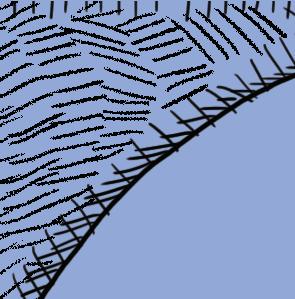




The hand-assembled 2026 Brick of chicago desktop calendar , with a custom letterpress cover printed by Ravenswood’s Starshaped Press , is as gorgeous as the brick photographs that fill its pages.
—SHAWN MULCAHY brickofchicago.com, $18.99

These beginner tatreez kits by Tatreez Jenin assembled by a local, self-taught tatreezer, come with everything you need to learn the ancient, beautiful art of Palestinian embroidery—“a language of resistance.” —KERRY CARDOZA tatreezjenin. myshopify.com; Pilsen Community Books, 1102 W. 18th; Skunk Cabbage Books, 2826 N. Milwaukee, $40


2026 Gay Calendar is a horny riso-printed calendar designed and printed by archivist printmaker Sasha Fuentes. It features the work of eight gay and trans artists, including Chicagobased artist Mony Nuñez, aka Mony Kaos , who designed the March page.
March






—SAVANNAH HUGUELEY deeplistening. bigcartel.com, $25


The Wicker Park streetwear shop Half Evil Co. is an informal headquarters for the #newchicago hip-hop movement. Show those in the know that you’re up on who is about to blow up in the city’s hip-hop scene with their namesake hat —LEOR GALIL halfevilco.com, $36

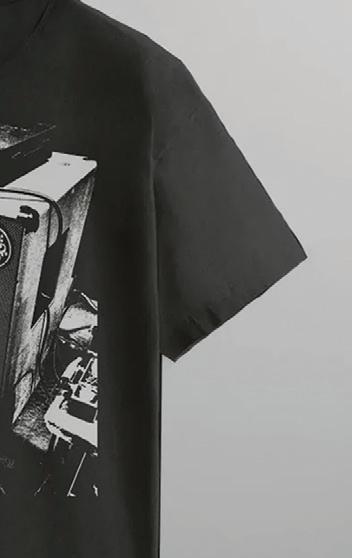



Literally Outside , a local Black-owned outdoors brand, makes the perfect heavyweight, boxy T-shirt: the L/O Trail therapy tee . I bought this for my brotherin-law in the color “slate” last Christmas and remain jealous. —TARYN MCFADDEN literallyoutside.com, $46
COURTESY OF LITERALLY OUTSIDE

Public Works Gallery launched a “Fuck ICE” T-shirt with 100 percent of proceeds going toward Palenque LSNA, a local BIPOC-led nonprofit that focuses on Latinx issues, including immigrant support. The shirt’s back urges people (in both English and Spanish) to call ICIRR’s 24-hour hotline when witnessing ICE activity. —MICCO CAPORALE publicworksgallery.com, $40






BRICK OF CHICAGO, DESIGN BY STARSHAPED PRESS
COURTESY OF PUBLIC WORKS GALLERY
COURTESY OF SASHA FUENTES
COURTESY OF TATREEZ JENIN
COURTESY OF HALF EVIL CO.
AMBER HUFF


I love giving wooden CTA TOY trains or buses to kiddos in my life. Available in all lines, there’s also a mini-version of the beloved holiday train and a “retro” model used in the 1940s. —KATIE PROUT ctagi s.com, starting at $18.95 per train, various three-packs available for $47.85





I missed the Chicago Film Society’s screening of The Symbol of the Unconquered (1920) at the Music Box Theatre earlier this year, but thank goodness for this dvd box set compiling all the extant works of the first prominent independent Black director (and onetime Chicagoan), oscar micheaux . —LEOR GALIL kinolorber.com, $71.96
To celebrate her store’s 12th year in business, Tusk shop proprietor Mary Eleanor Wallace has created a custom perfume in collaboration with local perfumery Clue , inspired by her favorite scent: the southern magnolia blossom. —KERRY CARDOZA 3205 W. Armitage, Suite 1, $75
OF TUSK


Resham’s has been selling self-described “divine ambience” on Devon Avenue since 1986. The store specializes in spiritual objects (along with home decor and clothing) from across South Asia, so it’s a robust resource for Meditation cushions Whether someone has an established meditation practice or is just beginning, Resham’s o ers seats in a wide range of shapes and sense-invigorating fabrics to support sitting still to cultivate inner wisdom. —MICCO CAPORALE Daley Plaza Christkindlmarket (Devon storefront closed through December 27), prices vary


The candleholders —and other handmade wooden home goods—on offer from Little Craft School are strikingly beautiful, with just a touch of whimsy. —KERRY CARDOZA littlecra school.com, $85-$150













Chicago artisan (and former Readerite) Vera Videnovich creates beautiful, Custom hand-knit clothing from the wool of the sheep at her Michigan farm. Her “skull shawl” is perfect for the goth on your gift list. —KERRY REID etsy.com/shop/ VidenovichFarms, $150-$300

J. Aniece of Aniece Apothecary & Bodywork offers bodywork as well as a variety of small-batch self-care and spiritual hygiene goods , like candles, teas, body oils, and herbal bath soaks. I got one of their room sprays from a holiday market last year and used it up almost immediately. —SAVANNAH HUGUELEY Follow @anieceapothecary; vending at the National Public Housing Museum Holiday Market and Baqyard Babes Holiday Market, both on 12/7

COURTESY OF VERA VIDENOVICH
COURTESY OF LITTLE CRAFT SCHOOL
COURTESY
COURTESY OF CHICAGO TRANSIT AUTHORITY
COURTESY OF RESHAM’S
J. ANIECE
COURTESY OF KINO LORBER

While operating on a shoestring budget, the Chicago Recovery Alliance, one of the nation’s oldest harm reduction organizations, provides free overdose prevention, safer use kits, and more to 15,000 Chicagoans a year. —KATIE PROUT anypositivechange. org/donate
The Midwest Immigration Bond Fund helps reunite families separated by the masked federal agents terrorizing our communities. This year alone, the volunteer-run organization has freed 60 people from immigration jails. —SHAWN MULCAHY secure.givelively. org/donate/midwest-immigration-bond-fund

Autonomous Tenants Union is a tenant-led volunteer collective based in Albany Park that fights against


Donations
evictions and for safe living conditions for working-class Chicagoans. —SAVANNAH HUGUELEY paypal.com/ paypalme/autonomousunion
Illinois Coalition for Immigrant and Refugee Rights has been promoting the rights of immigrants and refugees since 1986. In 2025, they’ve been working harder than ever, providing their regular programming while supporting, uplifting, and advocating for local communities targeted by ICE. —JAMIE LUDWIG icirr.org


Latino Union of Chicago unites and builds power among day laborers, household workers, and other contracted workers. Their northwest-side o ce serves

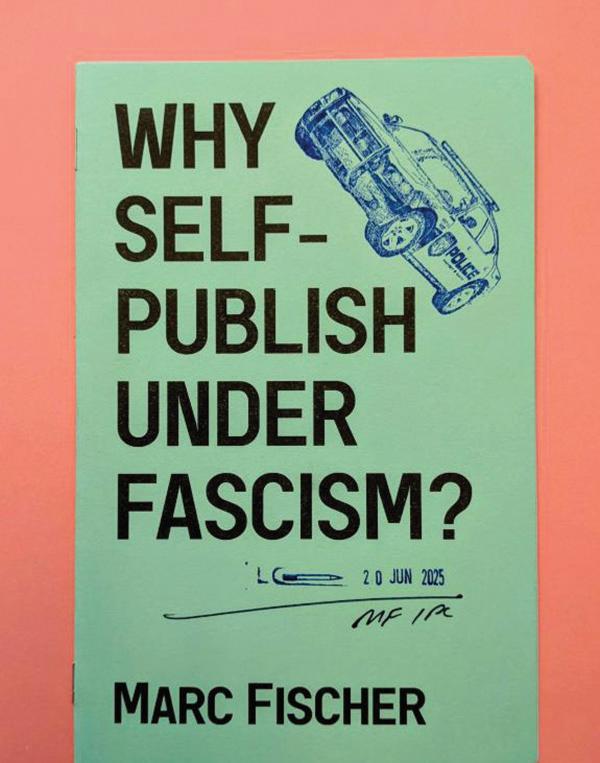
Every Christmas, whether they celebrate it or not, Keralites exchange a dense, boozy, South Indian-spiced fruitcake. Here, Thattu chef Margaret Pak makes a lighter, rum/bourbonsoaked version, full of dried fruit and nuts. (Nonalcoholic variety available.) MIKE SULA @thattuchicago and thattu. com for the presale link drop, $48

Why Self-Publish Under Fascism? is a question I ask myself often. I’ll leave it to Public Collectors’ Marc Fischer to be one voice of encouragement in his ZINE of the same title. (Full disclosure: I collaborated with Fischer on an issue of his one-page lockdown-era zine project, Quaranzine.) —LEOR GALIL halfletterpress. com, $6

as a hiring hall, education site, and hub for advocacy and coalition building. —SAVANNAH HUGUELEY latinounion.nationbuilder.com
Sista Afya Community Care addresses a vital need through their mission to provide free and affordable culturally centered and holistic mental wellness care for Black women and teens (particularly in underserved communities). —KERRY REID communitycare.sistaafya. com
People’s Music School has been providing 100 percent tuition-free music instruction to Chicago-area kids since 1976. Today, their teaching artists deliver upwards of 106,000 learning hours to hundreds of students per year. —JAMIE LUDWIG peoplesmusicschool.org/donate





Support Understudy Coffee and Books , Chicago’s only theater bookstore, by picking up Kimberly Belflower’s John Proctor Is the Villain, about a group of contemporary teen girls reading The Crucible and calling out the misogyny all around them. —KERRY REID 5531 N. Clark, $16

and Crust Fund Pizza founder John Carruthers created the barbecue-style “Millennium Pork” deep dish piE , benefitting Share Our Spare, providing toddlers in need with essentials like diapers. —MIKE SULA ship.giordanos.com/crustfund, multipacks from $94.99-$189.99

Giordano’s
COURTESY OF GIORDANO’S
(L TO R) COURTESY OF AUTONOMOUS TENANTS UNION, THE CHICAGO RECOVERY ALLIANCE, SISTER AYFA COMMUNITY CARE, AND LATINO UNION OF CHICAGO
MARGARET PAK
COURTESY OF HALF LETTER PRESS
COURTESY OF DRAMATIST PLAY SERVICE, INC.

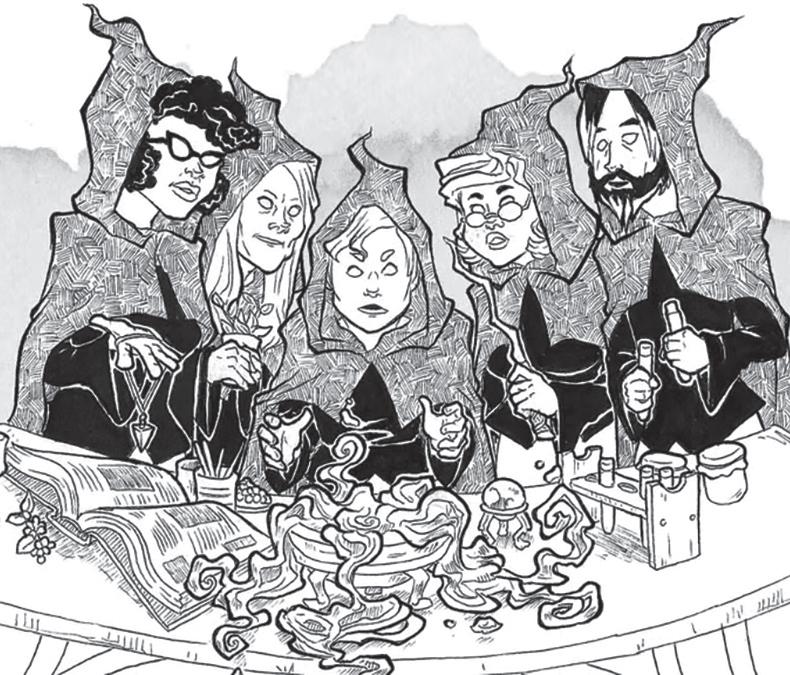

Every month, Malliway Brothers o ers a new batch of classes for building esoteric skills or knowledge (think tarot, astrology, divination, folk magic, and more). Some are standalone courses, while others are multiday workshops. Talk to a store associate about purchasing a course voucher for the mystical or mystically curious person in your life. —MICCO CAPORALE 1407 W. Morse, malliwaybros.com, $10-$30 for standalone courses, $100+ for multiday workshops



You no longer need to spend time in the Chicago History Museum’s archives to access the entire print run of Thing, the radical queer Black zine that launched out of Chicago in 1989. Primary Information’s Thing magazine compendium collects every issue in a tome that exceeds four hundred pages. (Though I do encourage you to go through the archives, as I did for my 2021 Pride Issue story.) —LEOR GALIL primaryinformation.org, $35


Sales from Good Trouble Bourbon ’s limited release, Five-year Trouble in Blues whiskey will benefit owner Dee Robinson’s Blues Legacy Committee, which aims to erect a statue at Navy Pier honoring Chicago musicians. —MIKE SULA goodtroublebourbon.com/troubleinblues, $169 ($349.99 for a kit with some other merch)

Altruistic Esthetics takes a holistic approach to facials, hair tinting, waxing, body sugaring, and clinical peels . Owner and certified aesthetician Pamela Arcand focuses on quality ingredients while curating a low-lit, organic-feeling space perfect for relaxing into an experience of embodied celebration. If any part of the service surfaces dormant negative energy (sometimes it can be hard to accept we deserve nice things!), there’s even a pillow-packed corner for crying. —MICCO CAPORALE 4809 N. Ravenswood, altruisticesthetics.com/treatments, prices vary








I’ve long been a fan of midwest-born indie label Ghostly International, due in no small part to the music it’s released by Chicagoans (including Hieroglyphic Being and Drama), so I’m a sucker for We’ll Never Stop Living This Way: A Ghostly International Catalogue, a photo-heavy tome unpacking the label’s history. —LEOR GALIL hatandbeard.com, $75 v

COURTESY OF MALLIWAY BROS
COURTESY OF ALTRUISTIC ESTHETICS
COURTESY OF HAT & BEARD PRESS
COURTESY OF PRIMARY INFORMATION
COURTESY OF GOOD TROUBLE BOURBON









THEATER
REVIEW
Battles of the sexes
Much Ado About Nothing at Chicago Shakes and The Taming of the Shrew at Court bring different lenses to gender politics.
By KERRY REID
According to a recent Gallup poll, 40 percent of women and girls in the U.S. ages 15–44 would like to move out of the country. Given the decimation of reproductive rights, the drumbeats on the far right for restricting women’s su rage, and the way this country has twice rejected highly qualified women in favor of the worst man possible for the highest o ce in the land (an adjudicated rapist, to boot), that’s hardly surprising. But fleeing only gets you so far in a world where misogyny is the default setting. And for much of history, women’s ability to pull up stakes and leave was circumscribed by marital circumstances. In such cases, how do you fight your corner without losing your mind—or your sense of humor?
Two current productions of Shakespearean comedies—The Taming of the Shrew at Court Theatre and Much Ado About Nothing at Chicago Shakespeare—serve almost as obverse images of each other. Both feature couples possessed of strong wills and great wit. But where Katherina in Shrew (or Kate, as she is more commonly called) at least on the surface appears to eventually submit to Petruchio (the man who marries her for money and status, and also for the seeming challenge of “taming” the sharp-witted and outspoken woman), Beatrice and Benedick in Much Ado come together as true equals by the play’s end. It perhaps stands to reason, given that Much Ado is the play with less problematic sensibilities for our times, that Selina Cadell’s staging for Chicago Shakes leans into the romcom underpinnings of the story with gusto. In particular, Deborah Hay’s Beatrice wouldn’t be out of place in a classic screwball comedy. Hay is marvelous here, her not-quite-mid-Atlantic accent and control of her physique (she can go from glamour-puss to klutz in seconds) reminiscent of Irene Dunne and Katharine Hep-
RMUCH ADO ABOUT NOTHING
Through 12/21: Tue 7 PM, Wed 1 and 7 PM, Thu–Fri 7 PM, Sat 2 and 7 PM, Sun 2 PM; also Sun 11/30 6 : 30 PM; Wed 11/26 1 PM only, no show Thu 11/28 ; open captions Wed 12/ 10 1 PM and 7 PM, ASL interpretation Fri 12/ 12 7 PM, audio description Sun 12/ 14 2 PM; Chicago Shakespeare Theater, 800 E. Grand, 312- 595 - 5600, chicagoshakes.com, $ 88 -$132
burn. She’s well matched by Mark Bedard’s Benedick, who is wiser than almost everyone else in the play—except when it comes to understanding his feelings for Beatrice. For her part, Hay’s Beatrice early on reveals the wounds she still carries from a previous dalliance with Benedick with a simple “I know you of old,” her voice dropping into a lower register as if she’s digging up unwanted memories of unrequited passion from her innards.
Despite the modern-dress approach here (Tom Piper created both the handsome Italian Renaissance-style set and the contemporary costumes), this is still a story from the late 1500s, as the obsession with women’s virtue makes clear. Beatrice’s cousin, Hero (Mi Kang), who falls in love at first sight with young soldier Claudio (Samuel B. Jackson), is nearly undone by the cruel plot of Don John (Erik Hellman), the “bastard” brother of Don Pedro (Debo Balogun). Don John is jealous of the favor Don Pedro shows Claudio and decides, like Iago, to plant seeds of suspicion in the younger man’s mind.
The ease with which the men around Claudio—including Hero’s own father, Leonato
RTHE TAMING OF THE SHREW
Through 12/14: Wed–Fri 7:30 PM, Sat–Sun 2 and 7:30 PM; no show Wed–Thu 11/26-11/27; ASL interpretation Sat 12/6 2 PM, open captions, audio description, and touch tour Sun 12/7 2 PM (touch tour 12:30 PM); Court Theatre, 5535 S. Ellis, 773-753-4472, courttheatre.org, $60-$90
(Kevin Gudahl)—assume the worst about the young woman is the darkest element in the play. And sadly, it’s one that still feels believable for our time, given the prevalence of “revenge porn,” et al. But Cadell doesn’t dwell unduly on it. Any plot that can be easily exposed by the Three Stooges–like band of constables led by Sean Fortunato’s bumbling Dogberry is, as the title suggests, not much to worry about. (There is a lovely moment at the “funeral” for Hero, whose pretended death is meant to shame Claudio, where the dirge is a slowed-down version of the play’s famous “Sigh no more, ladies, sigh no more” song.)
Cadell’s ensemble is in synch with the language and the comic sensibilities, with the actors engaging the audience in direct address and more. (At one point, Hay sat down next to a front-row patron and covered her face with their jacket to hide from her friends who, like Benedick’s friends, are plotting to get her to give him another chance). This is a mostly sunny and smartly goofy a air, anchored by the wit, maturity, and warmth of the leads.
Marti Lyons’s staging of The Taming of the Shrew at Court gives the play a framing device: a group of wealthy folk are performing the play as part of “The Shrew Experience.” (This hearkens back to the “induction” scene that kicks off the play, in which a drunken beggar, Christopher Sly, is told he’s actually a great lord, with a group of traveling actors staging a play for him.)
The play-within-a-play element here doesn’t entirely work: Though we are given a supplemental program identifying them (Lord K is a tech mogul, his wife is a “career woman” turned helpmeet, etc.), there isn’t really enough bleed between the frame and the bulk of Shakespeare’s play for most of the production to see the connections. That’s even though there is a “Chris Sly” who joins in the shenanigans (and who is clearly attracted to his boss’s husband). On the other hand, the inclusion of stagehands wearing oversized “shrew” heads (Kotryna Hilko designed the costumes) gives a hallucinatory quality to the proceedings. (Did they just wander in from the mouse battles in The Nutcracker?)
allow her to access more freely.) But tellingly, it’s when the play moves toward the conclusion and the walls between the contemporary players and the characters in the play start to crumble that the most disturbing elements come out. And it’s mostly on the side of the contemporary versions.

Quick summary for those who need it: Kate (Melisa Soledad Pereyra) is the eldest daughter of Baptista (Mark L. Montgomery), who will not consent to the marriage of his pliable youngest daughter, Bianca (Netta Walker), until her sharp-tongued sis finds a spouse. Enter Petruchio (Jay Whittaker), who has “come to wive it wealthily in Padua.” (Yes, that is also a song in the 1948 Cole Porter musical version of the play, Kiss Me, Kate.) Kate accepts him and finds herself quickly being starved, gaslit, and manipulated. (The scene where Petruchio literally tells her day is night and night is day is quite chilling here, aided by Maximo Grano De Oro’s lighting design.)
The nagging questions that Lyons’s production (she also adapted the script) raises about women’s complicity in their own oppression aren’t completely addressed here. There are times where the interplay between Pereyra and Whittaker has echoes of the erotic power plays of Maggie Gyllenhaal and James Spader in 2002’s Secretary . (And it sort of makes sense: like Gyllenhaal’s character, Pereyra’s Kate carries trauma that role-playing could
We’re living in a dark timeline brought to us in part by women’s willingness to prop up patriarchy if they think it serves their desires for status and pleasure. (The majority of white women voted for Trump—three times.) It’s always struck me as interesting that, unlike Hero and Beatrice (or Rosalind and Celia), Bianca and Kate seemingly share no camaraderie or solidarity. That’s changed a bit here by Lyons at the end, but we still see how patriarchy sets women in opposition to each other. If I’ve made it sound like this production is entirely heavy, that’s not right. There are many humorous interludes, several courtesy of Alex Weisman as Grumio, Petruchio’s muchabused assistant. At the wedding of Petruchio and Kate, the former shows up in a cowboy hat and pink boa, like he just stepped out of Ken’s Mojo Dojo Casa House in Barbie (2023). But I’d also argue that there’s simply no way to make Shrew work without leaving us with unease (not even Porter could totally achieve that). That’s where Lyons’s reinterpretation does ring true: the world for women in the U.S. is moving backward, and it’s largely at the behest of those who have created a marriage between social conservatives and tech-andfinance elites who don’t particularly care who gets tossed under the wheels, as long as they get their payout. It’s enough to make a woman want to pack her things and go. v m kreid@chicagoreader.com
Much Ado About Nothing KYLE FLUBACKER







FILM
R(1995) R,
Casino (1995) belongs in the Chicago film canon
An examination of Martin Scorsese’s mob movie 30 years a er its release
By ANTHONY MIGLIERI
At 422 “fucks” given, Casino premiered as the most profane movie ever in 1995. But Martin Scorsese’s Las Vegas mob epic drew the line at the C-word. That’s right: “Chicago.”
The story was adapted by Scorsese and Nicholas Pileggi from the latter’s nonfiction book of the same name. (Pileggi also wrote Wiseguy in 1986 and helped adapt it into 1990’s Goodfellas.) The book tells how the midwest mafia, led by the Chicago Outfit, gripped Vegas in the 70s and early 80s. Working with the Teamsters labor union to grant loans to casino investors, the mob controlled the gambling palaces and siphoned millions in profit. Scorsese’s film adaptation was to follow the Chicagoans who went to Vegas to oversee the operation known as “the skim”: Frank “Lefty” Rosenthal, a fastidious, renowned gambler turned casino boss, and Anthony “Tony” Spilotro, a vicious but brilliant gangster who served as the muscle.
Weeks before shooting began, however, studio lawyers began quibbling with the script. The reasons remain murky, but they likely involve the Chicago Department of Law, which was more protective of the city’s media image at the time. Outfit boss Joseph “Joey the Clown” Lombardo was also still active. For fear of a lawsuit, the legal team forced Pileggi and Scorsese to omit the names of the real-life players and their hometown. Always searching for truth in his material, Scorsese resisted before finally relenting.
The story remained essentially the same, but Rosenthal became Sam “Ace” Rothstein (Robert De Niro), and Spilotro became Nicky Santoro (Joe Pesci). None of the movie was shot in Chicago, and several Windy City–set scenes were transplanted to the desert. The title card at the start of the film changed from “Based on a true story” to “Adapted from a true story.” Mentions of Detroit, Milwaukee, Kansas City, and Cleveland remained in the film, but Chicago was replaced with “back home.”
These redactions obscured what should have been a classic Chicago film about an essential part of the city’s history. Chicago’s
past is intertwined with organized crime, but movies almost always focus on the first half of the 20th century: Scarface (1932), The Untouchables (1987), Public Enemies (2009), among others. Unfortunately, the Chicago mob did not end with John Dillinger and Al Capone, and the later stories deserve to be told. “The skim” was one of the most monumental crimes ever perpetrated in the U.S., with the City of Broad Shoulders extending its reach all the way to the Mojave. Chicago deserves to own this history and its portrayal in pop culture.
Pileggi’s book reveals just how much flavor got left on the page.
The real Rosenthal was a spindly, iceeyed blond from the west side. He worked as a clerk and bookie for Chicago gamblers before he could vote and played the odds in the bleachers of Wrigley and Comiskey. After developing a nationwide network of tipsters and a reputation to match, he escaped to Miami and then Vegas. He ran four casinos for the Outfit by the mid70s. Although De Niro looks nothing like Rosenthal, his commitment to playing the part convinced Rosenthal to contribute to the book and movie.
Spilotro was a fellow west sider. If Pesci was born to play a role, it was this burly, five-foot-five enforcer. The two bore such a resemblance that some casino personnel who had known Spilotro “nearly fainted” in Pesci’s presence, said Pileggi. Groomed for the Outfit at his father’s mob hangout, Patsy’s Restaurant, on the corner of Grand and Ogden, Spilotro slung his weight around town like a bowling ball. The Chicago Sun-Times and Tribune dubbed him “the Ant” sometime after he made his bones carrying out the so-called M&M Murders in 1962, the basis for Casino’s vice torture scene. It happened in Elmwood Park, though, not Vegas.
due to the high property walls and lack of neighborliness in the desert town. Frustrated and paranoid over the attention he drew from the Vegas police and media, Spilotro intimated to Cullotta a plan to take over the entire midwest mafia, to become “the pope of the mob,” as Cullotta said in the book. The film only hints at this ill-fated scheme.
Years later, the FBI played Cullotta a tape of Spilotro asking permission to eliminate him. Cullotta turned informant and became an indispensable resource not only for the Bureau but for Pileggi and Scorsese.
On his YouTube channel Mob Vlog, Cullotta remembers Pesci calling him a rat on set. “‘If you ever call me a name like that again, in plain, I will rip one of your eyeballs out of your head,’” Cullotta recalls telling him. “We
As is the case with so many Chicagoans, Spilotro and Rosenthal’s lives were dictated— and undone—by food. Spilotro’s weakness was Cullotta’s pizzeria, Upper Crust, where Cullotta claimed to have pioneered the stu ed pie style in Vegas. “As soon as I opened up that fucking pizza joint,” Cullotta recalls in Pileggi’s book, “Tony started coming around too much.” Spilotro was so smitten with the Chicago Italian fare, including beef sandwiches, that he blew his crew’s low profile and jump-started its downfall. Cops started posting up down the street.
Meanwhile, Rosenthal was a ribs guy, and he required them on a strict schedule. As the book recounts, he ordered takeout from the same Vegas restaurant every week at the same time. On October 4, 1982, Rosenthal did just that, then his car blew up. His bomber, still unidentified, knew exactly when and where to carry out the hit attempt. As explained in the movie, the extra metal plate beneath the 1981 Cadillac Eldorado saved Rosenthal’s life, but he fled Vegas months later.

After joining Rosenthal in Sin City, Spilotro enlisted Chicago pal Frank Cullotta as his street lieutenant. Leading the “Hole in the Wall Gang” burglary crew, Cullotta found it easier to rob homes in Vegas than in Chicago
turned out to be friends.” The former wiseguy also laments the casting, saying, “They don’t pick anybody but from New York, even though this is a Chicago movie.” Cullotta had so many pointers for the actors that he was eventually cast as the main hitman at the end of the film.
Thankfully, Casino manages to smuggle in a few references to the Windy City. The Outfit gets a mention. Pesci asks De Niro for the betting line on the “Bears’ game.” But the most precious artifact, the only element of the film that totally escaped the black markers and red pens of Universal’s lawyers, is Pesci’s Chicago accent. We should cherish it.
Perhaps to distinguish the character from
From L: Martin Scorsese, Joe Pesci, and Robert De Niro while fi lming Casino

his Tommy DeVito in Goodfellas , the actor uses his voice to tell us what “back home” really means. I couldn’t find any information
on Pesci’s approach, so I consulted local musician, content creator, and Chicago accent connoisseur Al Scorch.
“Pesci did a pretty good job,” says Scorch. “He strings the words together right.”
Scorch points to the opening voiceover: “He says, ‘I mean he had me, his best friend, lookin’ out for him.’ ‘I-mean-he-had-me’ just becomes one word. All the H’s drop out. The rhythm and cadence are good.” He even begins a sentence with, ‘As a matter of fact.’ I don’t know if that’s common grammar, but it’s really common in Chicago.”
Scorch explains, “The blue-collar Chicago dialect has got a lot of ethnic influence. . . . Irish, Polish, and some Italians drop the same letters. ‘Think’ becomes ‘tink.’” Pesci demonstrates this with phrases like, “He was wit [with] me” and “Trow [throw] her out.”
Scorch also notes the popping sounds on Pesci’s P’s and B’s, called plosives. “In the Chicago accent,” he says, “there will be a lag in the plosive, where you hold the air in your mouth ever so slightly more.”
Pesci hammers the R in “more” and “here” and the nasally A in “pal,” “cash,” and “back





home.” He also exchanges TH for D , as in “brudder” (“brother”) and “mudderfucker” (“motherfucker”). And he spits out the classic Great Lakes insult “jago ” on multiple occasions (not “jerko ,” as Cullotta made sure).
Pesci’s voice work slips sometimes, particularly during outbursts. Scorch understands: “You kind of go back to the mother tongue when you’re distressed, angered, frustrated.” Pesci also swears much more than the real guy did, according to Cullotta.
If Pesci wanted to maximize the Chicagoness of his performance, he could have adopted the mustache Spilotro sprouted in his later years. The appearance of a lip caterpillar in the third act of a three-hour movie might have been distracting, but this is nonetheless another act of censorship on the town once named “America’s Most Mustache-Friendly City” by the American Mustache Institute.
Those people were Spilotro and his brother Michael, though they were really killed in a Bensenville basement before being deposited in an Indiana cornfield in 1986. They now rest in the Spilotro family plot at Hillside, Illinois’s Queen of Heaven Cemetery. Rosenthal died of an apparent heart attack in Miami in 2008.
The final moments of Casino lament what Vegas has become—corporations took over, squeezing out the personality that made the town special. Scorsese said he viewed this as an allegory for Hollywood, of loss of artistic control and lifeless megaproductions. In stripping Casino of its Chicago roots, he himself was forced to compromise his vision of this film, robbing a classic from a great city’s filmography. But this is a Chicago movie, whether the characters say it or not. Three decades after release, it’s time we took Casino back. v
Despite the alterations made to the movie, the truth behind Casino still lives within some Chicagoans. Frank Vincent, who plays the fictionalized version of Cullotta, said in 2011, “When I was in Chicago . . . I went into a little restaurant that this little old lady owned, and she said to me, ‘How could you do that to those people? How could you put them in a hole and bury them alive? I knew their wives; they were wonderful people!’”
m letters@chicagoreader.com





































Anthony “Tony” Spilotro (R) with attorney Oscar Goodman COURTESY SPECIAL COLLECTIONS AND ARCHIVES, UNIVERSITY OF NEVADA, LAS VEGAS
Let’s Play!
FILM
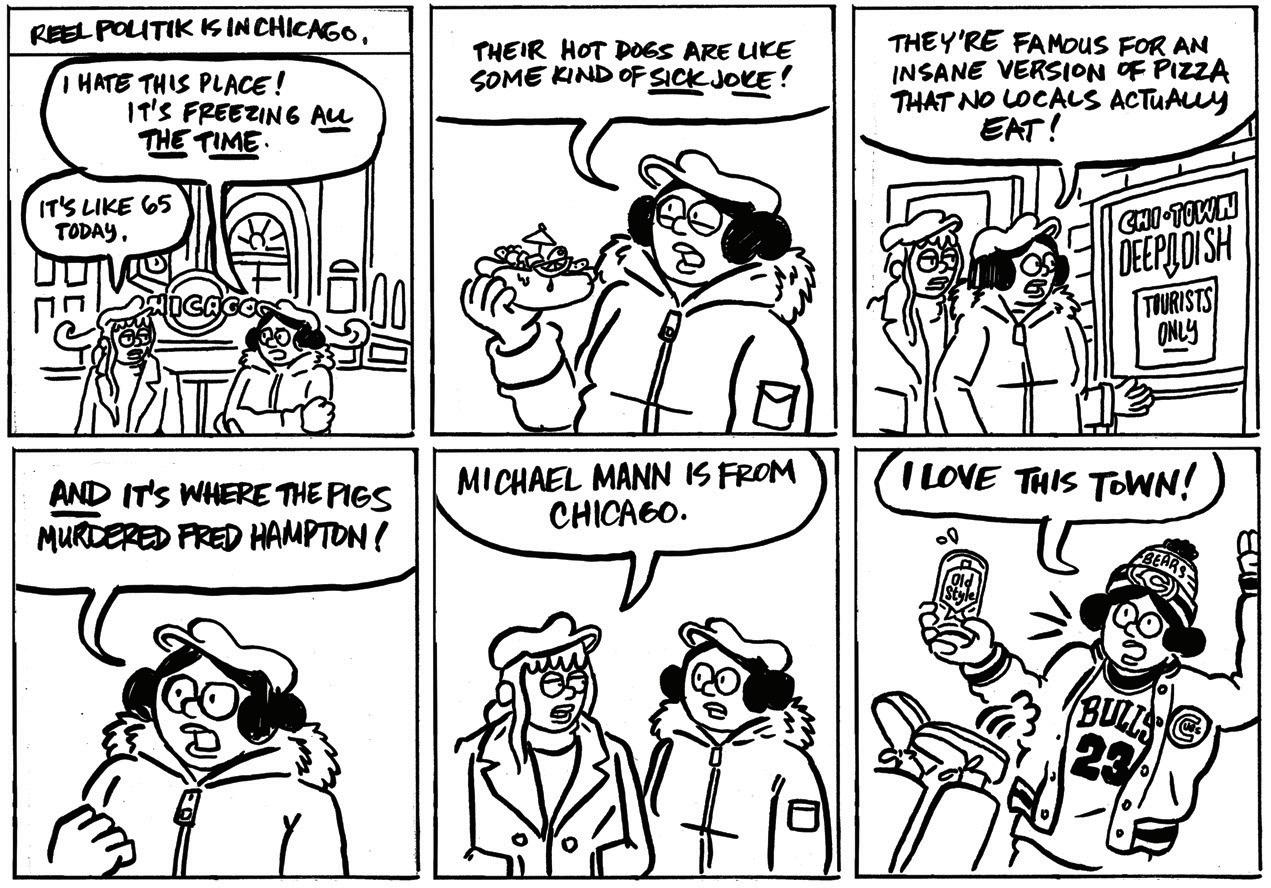



The artwork accompanying my column this week was drawn by my friend Nathan Gelgud, who, two Fridays ago, was in town to present Robert Downey Sr.’s Putney Swope (1969) at Northwestern University’s Block Cinema. The event coincided with the release of his book Reel Politik, a compilation of his inspired online comic strip that interrogates and celebrates cinephilia with a political slant that would make Jean-Luc Godard proud. I recommend it for anyone reading this column—and also as a potential gift for the holiday season.
Nathan and I have known each other online for almost a decade now (he’s designed posters for several screenings I’ve programmed around town), so this would have been our first time meeting in person. I say “would have been” because, at the very last moment, I was unable to attend the screening. On that Friday, one of our cats, Squeeks, started declining in health rapidly. We scheduled an emergency appointment with our vet, where we ended up having to put her down just an hour before the screening.
We were heartbroken, and still are—Squeeks loved cinema and would often join us for at-home movie nights. She especially loved horror movies, and we joked that she had an ongoing friendship with Leatherface from The Texas Chain Saw Massacre (1974). The first movie we watched together at home without her was Edward A. Blatt’s Between Two Worlds (1944), which ended up being oddly apropos. My husband had picked it up from the library because it was a film starring John Garfield he hadn’t seen. It centers a group of people in London during World War II who’ve all ostensibly booked passage on a ship

sailing to the U.S. It turns out, however, that they’re all dead (though only a few realize it initially), and that the ship they’re sailing upon is destined for the afterlife, where an uncertain fate awaits. Were that to be an accurate depiction of death, Squeeks would have been on that boat, on her way to meet the angel Sydney Greenstreet, who would have undoubtedly sent her to heaven.
Our community of film-loving friends has been supportive these past few weeks, and I dwelled in the feeling during a Sunday night screening of Blake Edwards’s S.O.B. (1981) at the Davis Theater. Cine-File (where I’m comanaging editor) copresented the show with John Dickson of the Oscarbate Film Collective as part of his ongoing Trust Fall blind screening series. Edwards based the film loosely on his own experience with a movie of his that flopped and had him contemplating death by suicide. Such is the fate of Felix Farmer (Richard Mulligan), the Edwards avatar whose latest film (starring his wife, played by Edwards’s real-life wife, Julie Andrews) has made him a studio pariah. It’s an absolutely hysterical movie, and everyone had a great time.
It ends with text onscreen saying that the updated version of Felix’s film (the production of which comprises most of the plot of the film) made a ton of money and everyone lived happily ever after . . . until the next movie. So on that note . . .
Until the next movie(s), moviegoers! —KAT SACHS v
The Moviegoer is the diary of a local film bu , collecting the best of what Chicago’s independent and underground film scene has to o er.

Melisa Soledad Pereyra and Jay Whittaker (Brosilow)
THE SECRET HISTORY OF CHICAGO MUSIC
Bluesman Andrew Tibbs called out white bigotry in 1947
That debut single was the only one to provoke backlash, but he had a string of regionally successful releases with the precursor to Chess Records.
By STEVE KRAKOW
Since 2005 Plastic Crimewave (aka Steve Krakow) has used the Secret History of Chicago Music to shine a light on worthy artists with Chicago ties who’ve been forgotten, underrated, or never noticed in the first place.
Sometimes music does more than reflect its time—sometimes it shapes history.
The 1965 Impressions tune “People Get Ready” served as an uno cial anthem of the civil rights movement, and the Scorpions’ “Wind of Change” became retroactively associated with the fall of the Berlin Wall when it came out in 1991, months before the dissolution of the Soviet Union.
Sometimes songs directly and immediately address historical events, of course. Crosby, Stills, Nash & Young’s “Ohio” condemns the 1970 Kent State massacre, and Gordon Lightfoot’s “The Wreck of the Edmund Fitzgerald” has made that 1975 Great Lakes tragedy more famous than perhaps any shipwreck since the Titanic. CSNY hit the studio within three weeks of the killings, and Lightfoot’s song came out nine months after the Edmund Fitzgerald went down.
Blues singer Andrew Tibbs debuted in December 1947, at age 18, with the song “Bilbo Is Dead.” It’s about Mississippi senator Theodore G. Bilbo, an outspoken segregationist and white supremacist who’d died in office that August.
Tibbs’s deadpan lyrics barely touched on Bilbo’s noxious policies, but a Black man could draw fire merely by sarcastically referring to the senator’s death in song. As always, racists can dish it out but not take it, and they love to insist that anyone pointing out their cruelty is the real problem.

Tibbs was born Melvin Andrew Grayson on February 2, 1929, in Columbus, Ohio. He hasn’t been written about much, but R&B historian Marv Goldberg posted a detailed profile of Tibbs in 2020 that’s been invaluable to this story. Tibbs was one of five children born to Hazel Wingo and Baptist minister Starling Andrew Grayson. The senior Grayson moved frequently from church to church, so that the family’s children were born all over: Virginia in New York, Starling P. and Robert in Pennsylvania, and Kenneth and Melvin in Ohio.
The family settled in the Windy City in 1940, where Tibbs’s father became the pastor at St. Luke Missionary Baptist Church at 3663 S. Indiana (located at 7262 S. Coles since 1971).
Tibbs got his start as a singer in the St. Luke choir. In the early 1940s, gospel goddess Mahalia Jackson became the church’s choir director for a few years. Ruth Lee Jones, later known as the great Dinah Washington, had sang and played piano in the choir while still in elementary school in the 1930s. (In 1947, she would marry Tibbs’s brother Robert “Bobby” Grayson, the third of at least seven husbands for the famed jazz singer.)
Tibbs also loved the blues, though his church considered it secular and sinful. His early influences included smooth, mellow
singers Arnold Dwight “Gatemouth” Moore (covered by the likes of Rufus Thomas and B.B. King) and Ivory Joe Hunter (covered by Pat Boone and Elvis Presley). Tibbs began sneaking out to perform in blues clubs, but he didn’t want to embarrass his pastor father, so he came up with a stage name: his middle name and the maiden name of his paternal grandmother, Mildred Tibbs. Tibbs sang at venues such as Jimmy’s Palm Garden, around the corner from the Macomba Lounge at 3905 S. Cottage Grove, a popular after-hours joint opened in 1946 by Lejzor and Fiszel Czyż. Within a few years, the Polish immigrant brothers would be known as Leonard and Phil Chess, founders of Chess Records.
In 1947, Leonard Chess invested in a new R&B label called Aristocrat and started selling its records. Aristocrat had attracted Leonard’s
attention when its talent scout, Sammy Goldberg, hired the Macomba house band’s tenor sax player, Tom Archia, for a session. Goldberg was also impressed enough by Tibbs to bring him to the label. Tibbs was booked to record in September of that year, backed by Dave Young’s Orchestra.
The ensemble cut four tunes, three of them written or cowritten by Tibbs (though the label credits don’t reflect this). “Toothless Woman Blues” and “Drinking Ink Splink,” which came out as a 78 RPM single in March 1948, now sound like novelty tunes, but the single “Bilbo Is Dead” b/w “Union Man Blues” (released in December 1947) holds up much better.
According to Goldberg, Tibbs collaborated with Tom Archia on the lyrics to “Bilbo Is Dead,” writing on a paper bag in the back seat of a cab on the way to the studio. Theodore G. Bilbo, who’d been a state senator and governor
of Mississippi before his career in the U.S. Senate, had been so voluble in his racism that even other segregationist politicians distanced themselves from him.
Even the perfunctory Billboard review of the single picked up on Tibbs’s tone, calling the A-side a “sarcastic blues chant about ‘friend’ Bilbo.” Tibbs’s powerfully elastic voice colors the tune’s barrelhouse piano and mournful sax solo, but the most direct lyric is “You can hurry back to Mississippi, ’cause Bilbo is dead and gone.”
Southern stations refused to play “Bilbo Is Dead,” and Rich Cohen claims in his 2004 book The Record Men: The Chess Brothers and the Birth of Rock & Roll that white mobs seized and smashed copies of the single.
“Union Man Blues” (cowritten by Tibbs’s mother) allegedly caused its own controversy. Several sources say Chicago teamsters didn’t like the song or interpreted it as a criticism of the union’s hostility to Black members, though this seems unlikely. The song’s lyrics are pretty mild and could easily be read as an allegory for a romantic relationship: “Let me tell you baby, can’t treat me like you used to do,” Tibbs sings. “’Cause I’m in the union, I just got the news.”
In any case, “Union Man Blues” stayed on the Cash Box chart “Hot on Chicago’s South Side” for six weeks, reaching the number two spot.
In October 1947, in anticipation of a union recording ban that would start in the new year, Tibbs cut four more songs for Aristocrat, this time with Archia’s band. The label delayed their release into 1948: “Married Man Blues” b/w “I Feel Like Crying” came out in June of that year. The A-side is cool and jazzy, and the B-side shows o Tibbs’s soaring vibrato. In January 1949, the single hit number 13 on a
Holidays Are Over” from December 1948. On the B-side, Tibbs is backed by Oett “Sax” Mallard’s combo, and on the rollicking A-side, he’s joined by the Dozier Boys and the ethereal piano of Herman “Sonny” Blount, soon to become Sun Ra. “In a Traveling Mood” charted locally in Chicago, Baltimore, New Orleans, Harlem, and Pittsburgh.
Tibbs’s tenure as Aristocrat’s foremost artist was brief. He squeaked out one more single for the label in October 1949, “How Long” b/w “I Know,” a couple months after its building at 5249 S. Cottage Grove burned down. One contemporaneous report estimated that 40,000 records had been destroyed, while another claimed that no shipments of Aristocrat music had been delayed since the discs were sent directly to distributors from pressing plants.
By this point, Tibbs was playing extensively around Chicago—at the Ritz Show Lounge, the Club DeLisa, the Pershing Lounge, Martin’s Corner, the Regal Theater, and the Indiana Theatre, among other spots—and sometimes elsewhere in the midwest, including Saint Louis, Detroit, Indianapolis, Louisville, and Ohio.
In July 1950, the National Association of Music Merchants held its convention at the Palmer House. During the convention, Randy Wood, founder of Nashville label Dot Records, organized a recording session with Tibbs and another Sax Mallard group. They cut four songs, and in August 1950, two of them (“You Can’t Win” and “Aching Heart”) came out via the freshly renamed Chess Records.
For some reason, the Chess brothers then dropped Tibbs. His story gets a lot harder to follow once he’s no longer a liated with one of the most famous record labels in history.
Andrew Tibbs debuted in 1947, at age 18, with the song “Bilbo Is Dead.” It’s about Mississippi senator Theodore G. Bilbo, an outspoken segregationist and white supremacist.
Billboard chart called “Most-Played Juke Box Race Records,” Tibbs’s only national chart appearance. “Going Down Fast” b/w “Same Old Story” came out in October 1948, and all four songs stay comfortably in the gutbucket blues tradition of romantic woe.
Among Tibbs’s later releases on Aristocrat (he had seven singles on the label in total), the one that looks most notable in retrospect is probably “In a Traveling Mood” b/w “The
Tibbs recorded four songs for the Savoy Label in 1951, though it’s not clear if he was ever signed to the label. The songs never came out, and at this remove, it’s tough to say why. He’d had trouble with the law, but that was likely a year before the sessions.
“At some point, Andrew Tibbs had been arrested for a drug-related crime (never specified in the media). He was sentenced to the rehab center at Lexington, Kentucky, to be treated for a heroin addiction,” Goldman wrote. “However, he then took up drinking (and I doubt it was ink splink). But when did this all happen?”
Some of Goldman’s sources contradict each other, so he’s not as certain as he’d like. “If I
MUSIC
had to make a guess, his Lexington stay would have been sometime between August 1950 and June 1951, a period during which there’s no mention of him.”
We do know Tibbs appeared in November 1951 at the Club 845 in the Bronx. Back in Chicago in January 1952, he joined a Sax Mallard session for Mercury Records, cutting the tune “Leap Year Blues.” It never came out as a single, but in 1996 it turned up on the eightCD box set Mercury Blues ’N’ Rhythm Story 1945-1955.
In June 1952, Peacock Records released the Tibbs single “Rock Savoy, Rock” b/w “Mother’s Letter,” where the Cherokee Conyers Orchestra overshadows his singing. Evidence of Tibbs’s musical activity is thin on the ground after that. A July 1954 concert listing places him at the Flame Club in Chicago on a bill with Jo Jo Adams, Shirley Harvey, and the band led by drummer Armand “Jump” Jackson (who’s also on “Leap Year Blues”).
In May 1956, Tibbs recorded a few songs with his brother Kenneth Grayson. As the Tibbs Brothers, they released two tunes by the songwriting team of Doc Pomus and Mort Shuman, who’d later write hits such as “A Teenager in Love” (for Dion & the Belmonts) and “Save the Last Dance for Me” (for the Drifters). Atco Records released “I’m Going Crazy” b/w “(Wake Up) Miss Rip Van Winkle” in July of that year, but the single went nowhere. Tibbs’s last platter was the similarly rocking “I Made a Mistake” b/w “Stone Hearted Woman,” released by the M-Pac! label in October 1965, when he was 36 years old. “With dwindling appearances, Tibbs got himself a day job,” Goldberg wrote. “Most sources say it was with West Electric, but I’m willing to bet it was actually Western Electric (the manufacturing arm of AT&T). He would still occasionally appear in small Chicago clubs.”
Tibbs died in Chicago on May 15, 1991. Goldberg can’t find an obituary, and I can’t either. The French compilation The Chronological Andrew Tibbs 1947-1951 appeared in 2002, collecting nearly his entire output. Let’s hope it’s not the last time his music gets reissued— we apparently still need reminders of the ways songs can puncture the facades of white supremacists. v
The radio version of the Secret History of Chicago Music airs on Outside the Loop on WGN Radio 720 AM, Saturdays at 5 AM with host Mike Stephen. Past shows are archived at outsidetheloopradio.com/tag/secrethistory-of-chicago-music.
MUSIC
CITY OF WIN
Stockboy transforms its streetwear shop into a creative studio
Jasir Bailey is more than one of Hyde Park’s youngest business owners—he’s also helping others follow in his footsteps.
By JOSHUA EFERIGHE
City of Win is a series curated by Isiah “ThoughtPoet” Veney and written by Joshua Eferighe that uses prose and photography to create portraits of Chicago musicians and cultural innovators working to create positive change in their communities.
Jasir Bailey is likely the youngest owner of a storefront business in Hyde Park—he turned 22 on October 10, the day before a ribbon-cutting ceremony for his streetwear brand, Stockboy. He sees Stockboy as more than a clothing shop—it’s a multidisciplinary space for creatives to bring their visions to life.
Bailey is changing the brand’s name from Stockboy Chicago to Stockboy Studios, which he says more accurately represents the role the shop is filling for the people who love it.
“I decided to go with Stockboy Studios, because it’s literally like a studio,” he explains. “It’s people that come in here that do video and photography projects; people have sat for hours painting art. People come in here, and we print their shirts. We do DJ sets in here; we do everything. So it’s literally a studio, and gives me an excuse to leave the store a little messy, because it’s showing that I’m working on stu .”
that he’s trying to think outside the box himself. A stack of vintage TVs to your immediate right displays a live feed of the store, and the back wall bears a black-and-white comic- style painting of Bailey stocking shelves, overlaid with a Stockboy logo. Stockboy pieces hang on racks to both sides, and the overall store design has the minimalist feel of a workshop.

back of their hand. I didn’t have those resources when I was growing up, and I went to school three blocks away from here. We ain’t have no cool store where the owners were 22 years old, so it’s just having stores that build relatability and dialogue.”
Bailey’s Stockboy brand pays homage to his time stocking shoes in the back of Succezz, one of the biggest Black-owned shoe stores in Chicago. He started working there at 13, under the tutelage of store owner LaVelle Sykes, a friend of his dad’s. He got engrossed in fashion and learned business savvy firsthand. In 2020, while still in high school, Bailey created and sold his first Stockboy design—a T-shirt of Chicago rapper Lucki. That same year, he ocially launched Stockboy as a company. The brand started o making a couple online sales here and there, but today Bailey says he’s taking orders from all over the world. “People are buying, like, the name Stockboy, not even knowing it came from me being a 13-year-old working retail in the back of a shoe store,” he told WGN in May.
Bailey held a couple Stockboy pop-ups, but the brand operated almost exclusively digitally until December 2024, when Sneakerville 88 owner James Denman called Bailey and invited him to share the Hyde Park storefront he was renting from the University of Chicago. In July 2025, Denman decided to close the shop for personal reasons, but he didn’t want to leave Bailey high and dry—he connected Stockboy with the U. of C. to help Bailey move into the larger space next door. The university owns all the commercial properties on the strip, and because it already loved Bailey’s contributions to the community, it soon o ered him the space.
In less than two months, Jasir has repeatedly demonstrated his vision for the space. Longtime south-side rapper Adamn Killa— who’s gone viral with the “Arrest me, daddy!” bit he’s been using to promote his song “Fall On”—held a meet and greet at Stockboy on November 20 that drew a line down the block. On Halloween, up-and-coming fashion designer Exavier Rodriguez held a pop-up release for a new Cult collection in the space, and Jasir says the 312 Collective has booked Stockboy for a creative networking mixer on November 26.
Born in West Humboldt Park, Bailey grew
up there and in Bronzeville. He attended Kenwood Academy from 12 to 16, at which point he moved in with his dad, Howard Bailey, in West Englewood. He now lives in Woodlawn. Bailey has been working in the world of clothing since age 13, and he says he already has a plan to provide his customers the resources to realize their own DIY projects. He sees the Chicago streetwear scene as lacking this kind of infrastructure for grassroots creativity.
“I’m just trying to bring coolness to Chicago,” Bailey says. “I feel like Chicago is really talented but not cool. You look at LA and New York—they really think outside the box. Chicago, we kind of go for the bare minimum, and if it works, we just keep doing it. But I want to do stu that’s cool.”
Located at 5239 S. Harper, Bailey’s brickand-mortar space makes it clear at a glance
A massive direct-to-garment (DTG) machine next to the checkout desk underlines the workshop aspect of the operation: Patrons can walk in o the sidewalk and have their own custom design printed onto a piece of clothing, at a higher level of detail than traditional methods such as silk-screening.
“We lack manufacturing when it comes to wanting to get stuff printed,” Bailey explains. The south and west sides in particular, he says, need more of it—especially accessible street-level options. “Like, if you want to get a shirt printed, do you know where to go? But if you’re in New York, LA, and you ask somebody, they probably know o the
Bailey is the opposite of a gatekeeper: He sees his own success as a way to help others.
“Shout-out to the University of Chicago,” Bailey says. “I didn’t have a long track record of doing well in-store. They saw the vision, invested into it, and took that chance on me. They understood this was my first business venture, so they really took care of me, gave me a good deal on the spot, and made it affordable. They showed too much love.”
Bailey knows the chips have fallen his way, and he credits that to his faith and his community. “I put God first before everything when it comes to business—everything. So I think that’s what makes me super successful. I’m able to lean on him for every single thing,” he says. “My community is my family—a big extension of
Jasir Bailey, 22, in the Stockboy Studios space at 5239 S. Harper
THOUGHTPOET FOR CHICAGO READER
my dad’s friends. My mom [Leyda ‘Lady Sol’ Garcia] runs an organization called Kuumba Lynx, so I have a big family when it comes to the art and business side of things.”
Bailey tries to pass along this good fortune by building community himself. So far more than 20 people have passed through Stockboy’s paid internship program, funded through the Chicago Youth Service Corps, which the city launched in summer 2020. The program also gives interns the opportunity to be entrepreneurs in their own right—Stockboy allows them to sell their own merchandise through the shop. “With my interns, a lot of them don’t come from the most stable housing,” Bailey says. “So being able to support them and giving them a safe space is something I’m very proud of.”
MUSIC
Initially, Bailey sold shirts for $15. At that time, he says, others sold theirs for $50. He’s maintained that edge as everything has gotten more expensive. “I have joggers for $50, when you got people in the same neighborhood as me selling their stuff for $80, $90. And they get their stu for the same price I get my stu made for.”
Bailey is the opposite of a gatekeeper: He sees his own success as a way to help others.
“I run as a consultant for other brands; everything they do, I get a piece,” he says. “Like, you come in here, have me print 20 shirts. I’m gonna make money off those 20 shirts, but you’re gonna also make money and go flip that for double. So it’s cool to see myself, like, building other entrepreneurs.”

Bailey has also hosted a series of “field days” with Fourtunehouse Art Center in Bronzeville’s Mandrake Park—health-conscious events that include sports activities, discussions, and healthy eating options. “I grew up in food deserts, eating like crap, but I was just a product of my environment,” Bailey says. “When I went to eat healthy, I was like, ‘Damn, I feel like a whole new person.’ So I put on events that help people break that point a lot earlier in life.” Bailey prides himself on selling high-quality streetwear at lower prices than his competitors. He credits his Pakistani manufacturer, who also helps him get fast packing and shipping.
“I got factories in Pakistan that I’ve invested in, so that they can do a lot of the quality control work,” Bailey says. “It’s better quality than what people are selling on the streets. You got GSM [grams per square meter], you got the weight of the hoodie, if it’s French terry, or some people will give you 50 percent cotton, 50 percent polyester. My stu is 100 percent organic cotton; it’s heavy cotton.”




Hence the “Studios” part of Stockboy Studios—Bailey wants to cultivate a space where creatives can grow. “I made it into a studio where we make art and sell it. It’s also like an incubator space for artists,” he says. “Anybody that wants to do something, they just pitch the idea.”
Bailey sees himself as more than a fashion designer or even a creative director. He takes the DIY mindset to its logical conclusion. “I just consider myself a nonconsumer,” he says. “When it comes to restaurants, I’m like, ‘Oh, how can I make it myself?’ These clothes are really cool, how can I make it myself? That space and party is really good, how can I do it myself? Oh, I like the way he plays the music, how can I DJ myself? Like, I’m more of an in-house kind of person where everything I’m interested in, everything I’m interested in buying, I want to learn how to do it.”
Having been to the kind of clothing shops in New York and LA that he wants to see more of here, Bailey of course decided to make one himself. He says he wants to bring coolness to Chicago, and so far he’s doing just that. v
m letters@chicagoreader.com Photos by ThoughtPoet of Unsocial Aesthetics (UAES), a digital creative studio designed to elevate community-driven storytelling and social activism in Chicago and beyond

Stockboy designs on the rack at the shop
Recommended and notable shows with critics’ insights for the week of November 27
Pivot Gang bring back John Walt Day on the heels of two new Saba albums

FRIDAY28
Silvana Estrada Bedouine opens. 8 PM, Thalia Hall, 1807 S. Allport, $39.96 GA standing, other tickets sold out. 17+
On Silvana Estrada’s second album, last month’s Vendrán Suaves Lluvias , the Mexican singersongwriter engraves more deeply the austere, luminous path she first traced with her 2022 full-length debut, Marchita. The title is inspired by “There Will Come So Rains,” a 1918 poem by Saint Louis lyric poet Sara Teasdale that used springtime imagery (during World War I and the great influenza epidemic) to describe nature’s perseverance and its indifference to human conflict. Throughout the record, Estrada explores heartbreak, adioses, and longing, while affirming the promise of renewal in the face of impermanence.
Estrada propels her ballads with her diaphanous vocals and often scaffolds them with her beloved four-string cuatro, a combination that encourages feeling emotions with the body rather than the mind. I’m especially drawn to farewell anthem “Good Luck, Good Night,” whose mariachi-style horns close the tune by weaving together in slightly off-kilter, dreamlike dissolves. As Estrada explained via Zoom from Stockholm, where she was on a European tour, she asked the trumpeters to sound “very, very, very drunk” during the sessions to evoke the smoky melancholy of a late-night cantina. She says she took stylistic cues from songwriters such as Juan Gabriel, Lhasa de Sela, and Tom Waits, and describes the tune as a “borderland song—somewhere between beauty and grit [and] what is Mexican and what is universal.” Another one of my favorite tracks is the mantralike lament “El Alma Mía,” a classic ballad informed by the Northern Mexican canto cardenche tradition, noted for its themes of pain and sorrow. It should be a cathartic and upliing experience to see Estrada at Thalia Hall to share songs for surviving loss with clarity and grace. “So rains will come,” as she told me. “It’s a humble promise, yet certain.” —CATALINA MARIA JOHNSON
WEST-SIDE HIP-HOP CREW Pivot Gang have long described themselves as a boy band. When they headlined Vocalo’s Summer Finale at Pritzker Pavilion in September 2024, Saba, Joseph Chilliams, MFn Melo, Frsh Waters, and Dae Dae moved onstage with casual professionalism, occasionally breaking into unison dance moves worthy of a pop vocal group. I’ve thought a lot about Pivot Gang’s boy-band presentation while listening to Coffee!, a nine-track project that Saba self-released the day before Halloween. The sleek, compact songs on Coffee! favor supple melodic production—they’re in character with Saba’s growing catalog of richly detailed tracks that lean on R&B suaveness and backpacker cool, but they push deeper into pop territory. These songs are also fun, with a light step that feels freed from heavy expectations. It sounds like Saba recorded them while goofing o with friends in the studio. Coffee! follows the March release of From the Private Collection of Saba and No ID , a years-in-the-works collaboration between Saba and the legendary Chicago hip-hop producer. This album feels joyful too, despite the weight of its history-making partnership: In the early 90s, No I.D. helped propel Common into the pantheon of great Chicago artists, and Saba is a gifted younger MC whose career, much like Com-
mon’s, has proved impervious to the ebbs and flows of trends. Saba’s work on Private Collection is some of his best, in part because he draws on his own history. “Westside Bound Pt. 4” is a great follow-up to one of the standouts on 2016’s Bucket List Project (“Westside Bound 3”), likewise paying homage to the west side and the way it’s shaped Saba and his friends as artists. No I.D.’s big, declarative production gives Saba room to show o , and he repeatedly switches up his flow. Then he hands the mike to MFn Melo for one of the best cameos on an album packed with big guests (including Raphael Saadiq, Madison McFerrin, and Kelly Rowland).
Melo, Saba, and the whole Pivot Gang crew are back together in town for the first John Walt Day since 2022. The event honors Pivot Gang member John Walt, who was murdered in February 2017. John Walt Day has also become a homecoming for a crew now split between Chicago and Los Angeles. I’m glad to see that, even as Pivot Gang’s star has risen internationally, they’ll still play a midsize venue in Chicago. I’m particularly excited to get another chance to see Pivot Gang perform the funny and ferocious 2024 single “Who at the Door?,” which they debuted at Pritzker Pavilion last fall. —LEOR
Martin Atkins presents Killing Joke’s Extremities See also Sat 11/29. Ganser and Bellhead open. 8 PM (door time), Reggies Rock Club, 2015 S. State, $75.93, $14.96 livestream, VIP packages available at martinatkins.bigcartel. com. 17+
UK postpunk pioneers Killing Joke have 15 studio albums to their name, and whichever one you might consider their “worst” is still light-years beyond anything their scene peers released. That doesn’t mean all their records have been equally adored, though. Their seventh full-length, 1988’s synth-driven Outside the Gate (originally intended as a solo project of front man Jaz Coleman) was so divisive it fractured the band. Longtime bassist Paul Raven and founding drummer Paul Ferguson left during the recording process, and poor sales and critical backlash got Killing Joke dropped from Virgin Records (parent company and distributor of their label, E.G.) two months a er the album’s release.
None of that kept Killing Joke down for long. In 1990, with Extremities, Dirt, and Various Repressed Emotions, they reemerged like a sci-fi movie villain
GALIL
JOHN WALT DAY
Saba headlines with Pivot Gang. Fri 11/28, 7 PM, Metro, 3730 N. Clark, advance tickets $47.94. b Pivot Gang: MFn Melo, Saba, Joseph Chilliams, Frsh Waters, Dae Dae
COURTESY THE ARTIST

who comes back ten times more ferocious after a failed attempt to destroy them. By then, Raven had returned to the fold, and the band had recruited English drummer Martin Atkins (Public Image Ltd., Ministry, Pigface), who’d moved to Chicago the previous year to join the city’s rich industrial scene. Despite what the full title of Extremities might suggest, Killing Joke don’t seem to be repressing anything on this album: It brims with intense rhythms and evocative, haunting atmospheres, and Geordie Walker’s visceral guitars slash and whirl as Coleman spews venom at the greedy politicians and corporations whose manipulations are slow-walking humanity toward self-destruction. Though some old-school fans balked at the record’s industrial leanings, today it’s widely regarded as a return to form that stands among the band’s masterpieces. It’s also the only Killing Joke album to feature the Coleman-AtkinsWalker-Raven lineup (though in 1991, Atkins formed Murder, Inc. with Walker, Raven, Chris Connelly, and John Bechdel, later recruiting Ferguson as second drummer).
A lot has happened in the 35 years since Extremities was released, and many of those involved in its creation are no longer with us: Raven died in 2007, Walker passed away in 2023, and Chicago recording engineer Steve Albini, who tracked demos with Walker and Atkins at his home studio, left us last year. Shortly after Walker’s death, Atkins began revisiting the music they made together, and this February he put on Extremities and started drumming along, which he found shockingly cathartic.
“It was like a different, physical, back channel?” he wrote in his April newsletter for the Museum of Post Punk & Industrial Music, which he runs in Bridgeport. “Visceral pipeline into the space we made the music in? It was JARRING, and I cried a lot, unexpectedly. I think I broke a finger too, which felt totally correct.”
That experience—along with a desire to honor his departed friends—inspired Atkins to commemorate the 35th anniversary of Extremities with an all-star lineup drawn from the metal, postpunk, and industrial communities. For this performance Atkins will be joined by a core lineup of vocalist Randy Blythe (Lamb of God), bassist Justin Pearson (the Locust,

Deaf Club), and guitarist Mark Gemini Thwaite (the Mission, Mob Research, Sevendials). The other artists participating include LA singer and synth player Tara Busch (I Speak Machine), Detroit vocalist Nicola Kuperus (Adult.), and locals such as cellist Leyla I. Royale (a Pigface collaborator) and electronic musician Orville Kline. Along with a full-album performance, audiences will hear behind-the-scenes stories from former Killing Joke touring member Steve Silver. This celebration of music and life will be heavy in every sense of the word. —Jamie Ludwig
John Walt Day See Pick of the Week on page 32. Saba headlines with Pivot Gang. 7 PM, Metro, 3730 N. Clark, advance tickets $47.94. b
SATURDAY29
Martin Atkins presents Killing Joke’s Extremities See Fri 11/28. Ganser and Clubdrugs open. 8 PM (door time), Reggies Rock Club, 2015 S. State, $75.93, $14.96 livestream, VIP packages available at martinatkins.bigcartel. com. 17+
TUESDAY2
Julianna Riolino 8:30 PM, Hideout, 1354 W. Wabansia, $23.65. 21+
Julianna Riolino’s new second full-length, Echo in the Dust , is a roots-rock album that floats in currents of postpunk, punk, and doo-wop. The Canadian singer-songwriter first drew attention as a vocalist in classic rock–infused indie band Daniel Romano’s Outfit, whose late-2010s ascent she helped fuel with her singular stage presence. In interviews, she’s described the Outfit as thrilling but demanding— it helped her develop her talent, but its relentless tour schedule left her with little room to think about making her own music. Gradually she distanced her-
self from the group. She released her solo debut, All Blue (You’ve Changed), in 2022, and played her last show with the Outfit in 2023.
While All Blue is a well-crafted alt-country record, Echo in the Dust (on Riolino’s new Moon -
Whistle imprint) is embellished with romantic poprock flourishes that show significant creative maturation. Its first single, “Full Moon,” which dropped in August, shares some of the haunting rhythm of Echo & the Bunnymen’s “The Killing Moon,” though

Silvana Estrada JESÚS SOTO FUENTES
Julianna Riolino BROOKE TUTTY
Martin Atkins (center) and the band he’s built to play Killing Joke’s Extremities COURTESY MARTIN ATKINS
MUSIC
Find more music listings at chicagoreader.com/musicreviews

Riolino uses synthesizers to create a brighter, less brooding effect. Her vocals start soft and clean, but soon she’s wailing with an urgent vocal striation that evokes Stevie Nicks. “Seed” begins with the anxious, staccato piano chords and lusciously wistful backup vocals of a 60s heartbreak ballad, then takes a surf rock–inspired pivot at the midway point. Before she gets to the refrain, Riolino only teases her disappointment—but when she belts out “When you find some peace of mind,” each vocal groove reveals another contour of her anger and sadness. “It’s a Shakedown” also has a genre twist halfway through, moving between a rich, twangy ballad and a punk jam touched with psychedelia. Riolino is just a couple years into her solo career, but Echo in the Dust reveals a self-possessed artist determined to keep growing. —MICCO CAPORALE
$ilkmoney $ilkMoney coheadlines with Fly Anakin and Quelle Chris; Big Kahuna OG and Ewonee open. 8 PM, Subterranean, 2011 W. North, $26.96. 17+
Virginia rapper $ilkMoney first impressed me in 2016
with “Decemba (Remix),” a track he made with his group Divine Council that featured a rare verse by Andre 3000. A star as big as Three Stacks can easily eclipse most artists he works with, never mind a relatively unknown crew, but on “Decemba (Remix),” $ilkMoney steals the show. His seesawing flow includes speedruns through his raunchy lines that tumble so fast it sounds like each word is trying to leapfrog over the next. $ilkMoney has since sharpened and intensified his rapping over a series of solo albums—when I first heard the 2022 track “I Ate 14gs of Mushrooms and Bwoy oh Bwoy,” the grit and resonance in his voice shook me like a bass drop. In July, he released Who Waters the Wilting Giving Tree Once the Leaves Dry Up and Fruits No Longer Bear? (Lex), which cements him as an MC capable of delivering mind-altering, tonguetwisting verses with distinctively mercurial force. $ilkMoney also remains in community with a loose collective of like-minded rappers and producers, and he’s coheadlining this show with two of them: Detroit MC Quelle Chris and fellow Richmond rapper Fly Anakin, who featured $ilkMoney and Quelle Chris on his April album, (The) Forever Dream (Lex). —LEOR GALIL v







$ilkMoney MICAIAH CARTER continued from p. 33

CLASSIFIEDS

JOBS
Attorney, Corporate (Chicago, IL) Represent publ.- & priv.-held co’s, as well as PE sponsors & their portfolio co’s, in conn. w/ transactions which incl. international acquisitions, strategic mergers, takeprivate transact., equity investments. Advise clients consider. or particip. in transact, incl. advising on transact. structures & deal terms. Negot. & prep. primary transact. docs. $310,000 per year.
Req’mts: JD or foreign equiv., IL Bar, 3 yrs of exp.inposition or 3 yrs. of alternate occupational exp. performing complex cross-border merger & acquisition advisory legal duties. Email resume/ ref’s to Shadae.Pickett@ lw.com, referencing position CORP5. Latham & Watkins LLP.
Attorney, White Collar Investigations (Chicago, IL) Represent public & private corps. & their officers & directors in gov’tal & internal investigations. Advise clients on compliancerelated issues, incl. in transactional contexts. Oversee doc review & production. Prepare for & conduct witness interviews. Develop case strategies. Prepare investigative reports, talking points, presentations, corresp. w/ regulators & internal stakeholders. Represent clients at interviews, depositions, trial. Negotiate resolutions & prepare assoc. docs. $310,000 per year.
Req’mts: JD or foreign equiv., IL Bar, 3 yrs of exp.inposition or 3 yrs. of alternate occupational exp. performing complex corporate regulatory defenseadvisory legal duties. Email resume/ ref’s to Shadae.Pickett@ lw.com, referencing position WHCO1. Latham & Watkins LLP.
Ecom Product Owner at Bunzl Distribution USA, LLC in Morton Grove, IL. Position will work with teams across eCommerce, design, engineering, QA, legal, compliance, marketing, operations,
and Bunzl sales teams to build and project manager eCommerce products for our Distribution customers.
Salary: $110,000. Benefits: Med. Dent. Vis., PTO & 401k. Position requires Bachelor’s degree (Comp. Sci., Info. Tech., Electronics Eng. or rltd. fld.) or foreign equiv. & 3 yrs. of exp. Position allows for occasional telecommuting within reasonable distance of reporting office in Morton Grove, IL. Apply online: https://www. bunzlcareers.com/ (Req. No. ECOMP020167)
Infectious Disease Physician needed in Evanston, IL. Send resume to Tara Kowalski, Metro Infectious Disease Consultants, 901 McClintock, # 202, Burr Ridge, IL 60527
Lead Software Engineer at Bunzl Distribution USA, LLC in Morton Grove, IL. Position will lead, design, develop, test, and implement high-quality, innovative software solutions. Salary: $153,317. Benefits: Med. Dent. Vis., PTO & 401k. Position requires Bachelor’s degree (Comp. Sci., Comp. Eng. or rltd. fld.) or foreign equiv. & 8 yrs. of exp. Position allows for occasional telecommuting within reasonable distance of reporting office in Morton Grove, IL. Apply online: https://www. bunzlcareers.com/ (Req. No. USATE020042)
Real Estate Financial Analyst, Multifamily Development: Chicago, IL. $130K-$135K/yr. Resume to Banner Property Mgmt, 300 Riverside Pl, Ste 1250, Chicago, IL, 60606. Attn: M. Sullivan.
Tots Land Inc seeks a Business Development Specialist. Mail resume to 2637 N Harlem Ave, Chicago, IL 60707.

AUDITIONS
IDM/EDM Artists wanted. Original music only. idm-edm.com

MARKETPLACE
Go Store It Chicago Northside StorageLakeview, 2946 N Western Ave, Chicago, IL 60618 hereby gives NOTICE OF PUBLIC SALE of the storage space(s) listed below, containing household and other goods will be sold for cash on Dec 15th, 2025 2:00pm with the contents being sold to the highest bidder. Owner reserves the right to bid. The sale is being held to satisfy a landlord’s lien, in accordance with Illinois Compiled Statutes Chapter 770 ILCS 95/, and will be held online at www.storagetreasures. com. G09 JanePalomar, I08 Alicia Rodriguez, L05 Renato Medina, P47 Ryan Weldon, Q32 Renato Medina Chicago Northside Storage

SERVICES
CHESTNUT
ORGANIZING AND CLEANING SERVICES: especially for people who need an organizing service because of depression, elderly, physical or mental challenges or other causes for your home’s clutter, disorganization, dysfunction, etc. We can organize for the downsizing of your current possessions to more easily move into a smaller home. With your help, we can help to organize your move. We can organize and clean for the deceasedinlieuofhaving the bereaved needing to do the preparation to sell or rent the deceased’s home. We are absolutely not judgmental; we’ve seen and done “worse” than your job assignment. With your help, can weplease help you? Chestnut Cleaning Service: 312-332-5575. www.ChestnutCleaning. com www. ChestnutCleaning.com



